Fuel Economy Factors - Part 1: The Role of Aerodynamic "Drag"
Posted by nate hagens on November 3, 2009 - 10:21am
This is a guest post from Will Stewart. Will is a systems engineer in the DC area and previously has written several guest posts on The Oil Drum, including a series on Passive Solar Design.
As oil production falls and volatile oil prices in concert with a struggling economy induce a pattern of demand suppression/destruction, mobility choices will narrow and Vehicle Miles Traveled (VMT) will decline. What should governments at all levels be proactively preparing for? What should individuals and their families be preparing for in advance? The choices are broad: at a high level, land use planners could refine cities into a series of compact, carfree urban districts interconnected with mass transit. For the existing built-out suburban and exurban communities, however, such choices are limited. Aside from telecommuting, transportation choices will increasingly include biking, carpooling/vanpooling, bus rapid transit, and other efficient means of transportation. Travel between cities and countries will also undergo a transformation, with air travel becoming less and less affordable.
This series will cover current and projected land-based vehicle energy efficiency and a high level overview of the factors that determine it, such as aerodynamic drag, weight, efficiency of motive force (e.g., engine, motor), rolling resistance, driver behavior, drivetrain losses, parasitic losses, environmental factors, Passenger Miles Traveled (PMT), etc. In this first article of the series, we will focus on energy losses associated with aerodynamic drag losses, or more succinctly, “drag”.
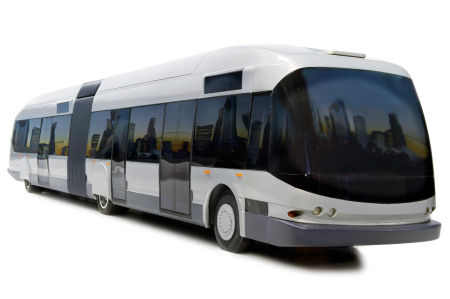 |
|
| Tri Sled Avatar, a velomobile | Bus rapid transit in Cleveland |
Drag is a force working against an object whenever that object moves through a fluid (i.e., a liquid or a gas) and is highly dependent on the object’s velocity, Coefficient of Drag (Cd), and cross sectional area. We can express these dependencies in a simple formula;
Fd = -0.5ρv2ACd
where;
Fd = the force of drag,
ρ = the density of the fluid. At sea level, dry air is 1.2 kg/m3 at 20°C and 1.29 kg/m3 at 0°C.
v = the speed of the object relative to the fluid,
A = the cross sectional area of the vehicle,
Cd = the drag coefficient
Multiple connected vehicular objects (e.g., trains, articulated buses, and trucks with multiple trailers) have more complex calculations, due to the drafting effect of multiple objects in succession. The distance between each is a major determinate for calculating the aggregate drag force. [1]
Coefficient of Drag (Cd)
This is a dimensionless number that describes how ‘smoothly’ an object can move through a fluid. The “rougher” the surface of the object, the more turbulence is induced, hence the higher the Cd; conversely, the more streamlined the object is, the lower the number (golfballs are an exception). Table 1 has general values for many common objects.
Table 1: Example Drag Coefficients
| Cd | object or shape |
|---|---|
| 2.1 | rectangular box |
| 1.0~1.4 | skydiver (horizontal) |
| 1.0~1.3 | person standing |
| 0.9 | bicycle |
| 0.7~1.1 | formula one race car |
| 0.7~0.9 | tractor-trailer, heavy truck |
| 0.6 | bicycle with faring |
| 0.6~0.7 | tractor-trailer with faring |
| 0.5 | sphere |
| 0.35~0.45 | suv, light truck |
| 0.25~0.35 | typical car |
| 0.05 | airplane wing, normal operation |
| 0.15 | airplane wing, at stall |
| 0.020~0.025 | airship, blimp, dirigible, zeppelin |
Air flow around a vehicle can be separated into laminar flow and turbulent flow. Laminar flow is a steady movement of air in one direction. Turbulent flow, on the other hand, is noted by swirling eddy pockets that increase drag. A real world understanding of the difference can be realized by anyone who has held their hand out of a moving car window, changing the angle of their hand.
Cd will vary depending on the speed range, so we would want to focus on values that have merit in the ranges we are examining. Since drag is proportional to the square of the speed, the faster a vehicle travels, the lower the efficiency of distance traveled vs. energy input.
Figure 1 shows where laminar flow separates from the vehicle shape, marking turbulent flow points.
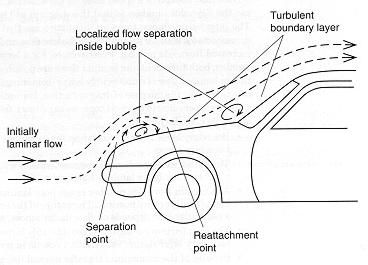 |
| Figure 1: Example sources of vehicle frontal turbulence |
While much design and marketing focus is placed on the streamlining of the vehicles front half, the rear half and undercarriage are equally important (or more so). Figure 2 shows the effects of different vehicle rear configurations and their affects on turbulence.
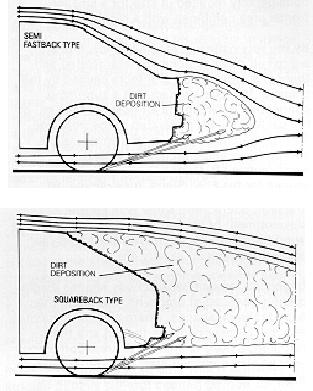 |
Figure 2: Variation in drag of different rear configurations
Some manufacturers have been smoothing the underside of vehicles in order to further reduce Cd even further (e.g., Toyota Prius and Honda Insight), with aftermarket vendors offering similar products for several other models.
In order to predict a vehicle's Cd, manufacturers often simulate wind turbulence with modeling software applications to quickly evaluate "what if" changes to a model design, allowing greater improvements before the physical prototying stage.
 |
| Figure 3: Simulation of vehicle aerodynamics |
Once the model has been simulated satisfactorily, production mockups are incrementally created and tested in the wind tunnel to collect actual data to validate the modeling and to zero in on any final improvements.
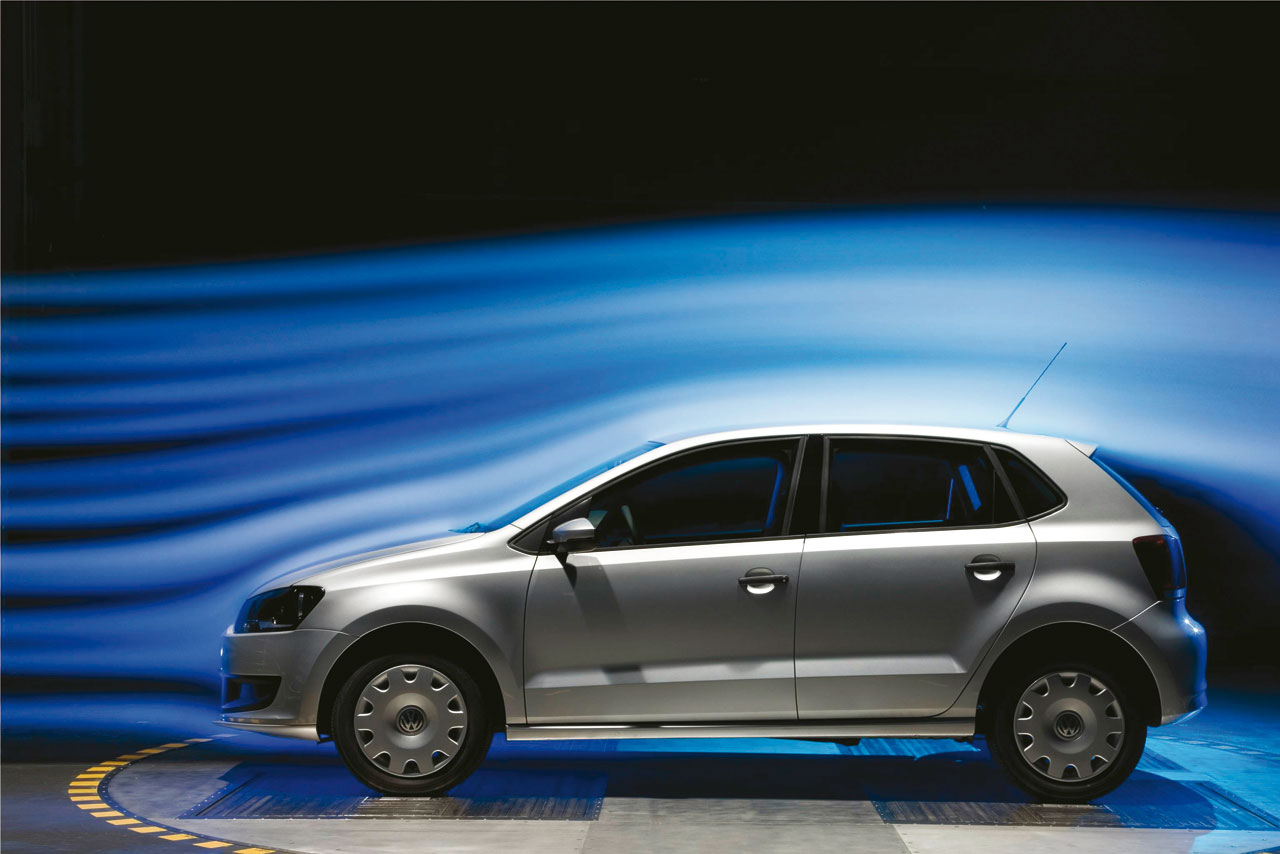 |
| Figure 4: Wind Tunnel testing of the new VW Polo |
A significant leap forward in human powered vehicle Cd improvement came through the introduction of fully faired recumbent bikes, commonly called velomobiles [2][3], though their history has been fraught with obstacles. Due to their aerodynamic superiority, fairings and recumbents were banned from bicycle racing for providing too much of an advantage, so they languished outside the borders of bicycle competition for decades. The design of velomobiles now includes wind tunnels testing, with one example (the Reflex 700) achieving a 'head-on' Cd of 0.012. The designer of the Reflex (Don Elliot) reports that during wind tunnel testing at a 25 degree angle, it registered forces similar to a tacking sailboat. This effect resulted in an apparent benefit during the 1999 World Solar Cycle Contest where "the riders said they actually stopped pedalling in the gusting cross winds and still maintained speed."
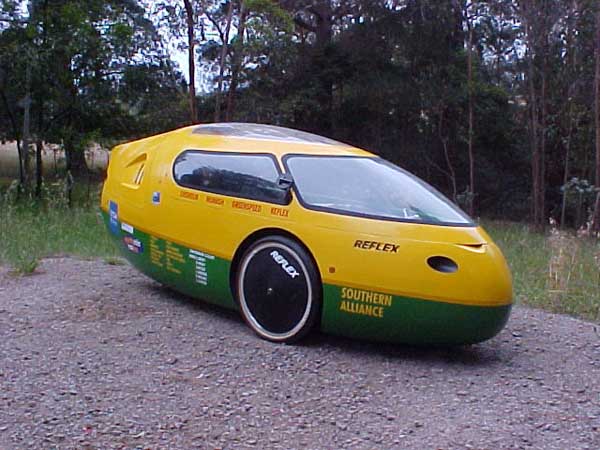 |
| Figure 5: Velomobile fairings can reduce a typical cyclist's Cd from 0.9 to 0.012 |
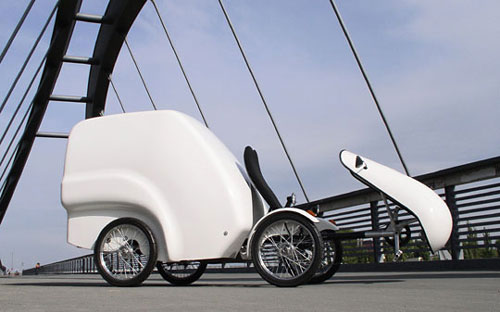
|
| Figure 6: Even freight bikes are becoming more aerodynamic |
Area
Coefficient of drag is important, though only one aspect of the drag force equation. Another equally important variable is cross sectional area of the vehicle with regard to the direction of the travel (and prevailing wind). This area is typically the frontal area of the vehicle, or the outline of the vehicle when viewed from the front. Per the equation above, we see that drag is proportional to the cross sectional area, so vehicle designers and serious cyclists take measures to reduce this area as much as possible.
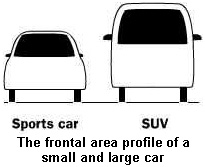
|
Figure 7: Cross sectional area differences between car, SUV, and velomobile
A common indicator of the drag of a vehicle is the product of the coefficient of drag (Cd) and the cross sectional area (A), which gives us CdA. This term provides a quick means of assessing the aerodynamic qualities of a vehicular body or cyclist form. Table 2 below shows the CdA of some selected vehicles.
Table 2: Examples of vehicle CdA
|
0.019 m2 |
0.079 m2 |
0.092 m2 |
0.13m2 |
|
0.18 m2 |
0.18 m2 |
0.199 m2 |
0.211 m2 |
|
0.22 m2 |
0.23 m2 |
0.2-0.3 m2 |
0.3-0.35 m2 |
|
0.36 m2 |
0.37 m2 |
0.47 m2 |
0.50 m2 |
|
0.54 m2 |
0.54 m2 |
0.55-0.7 m2 |
0.6-0.7 m2 |
|
0.58 m2 |
0.59 m2 |
0.59 m2 |
0.63 m2 |
|
0.64 m2 |
1.07 m2 |
1.08 m2 |
1.61 m2 |
|
2.46 m2 |
~2.6 - 4.2 m2 |
~5.0 - 7.0 m2 |
~8.5 - 10.5 m2 |
* - Typical values, though outliers exist
Up Next
The next part of this series will cover velocity and rolling resistance (with at least one surprise)...
References
1. Lai, Barkan, Onal, Optimizing the aerodynamic efficiency of intermodal freight trains
2. Frederick Van de Walle, The Velomobile as a Vehicle for More Sustainable Transportation, Stockholm Royal Institute of Technology, 2004
3. International Human Powered Vehicle Association, Human Power: The Technical Journal of the IHPVA, Number 54, Spring 2003
4. Caterpiller, Understanding Tractor-Trailer Performance
5. Fred Browand, Reducing Aerodynamic Drag and Fuel Consumption, Workshop on Advanced Transportation, October 10-11, Stanford University
6. International Human Powered Vehicle Association, Human Power: The Technical Journal of the IHPVA, Number 4, Spring 1997
7. Cossalter, Vittori, Motorcycle Dynamics, Lulu.com, 2006



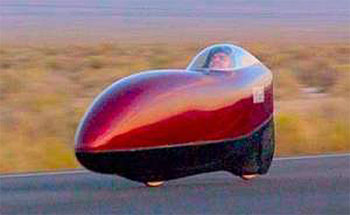
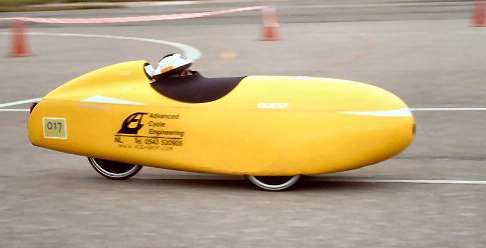
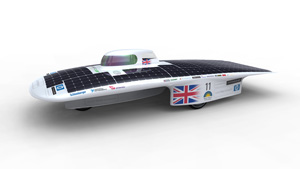
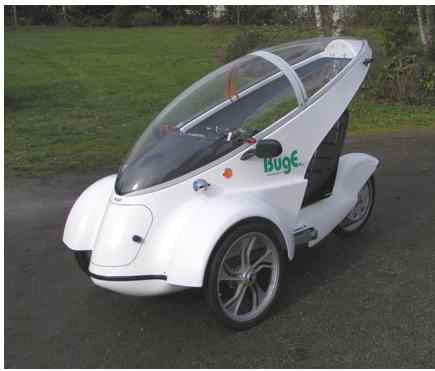
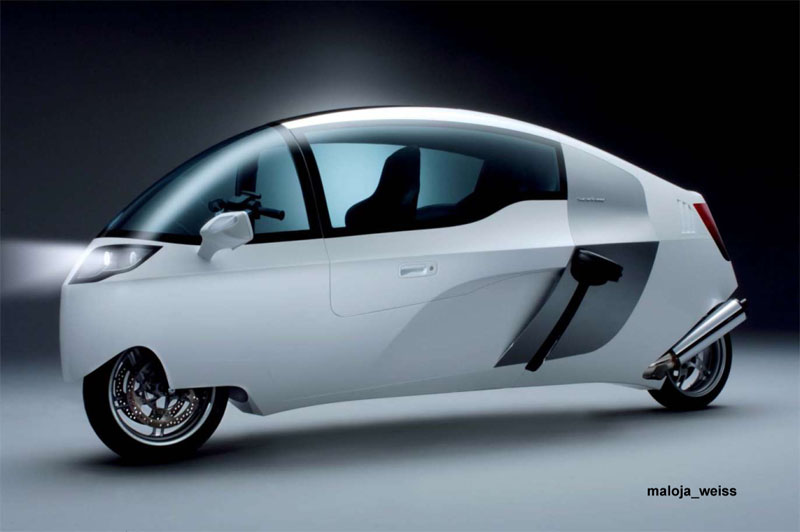
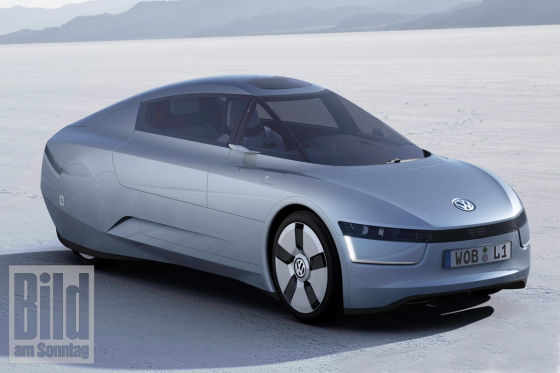


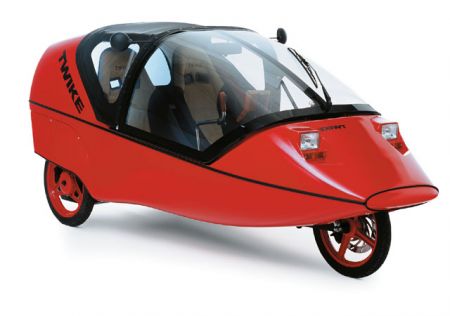
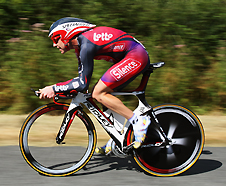

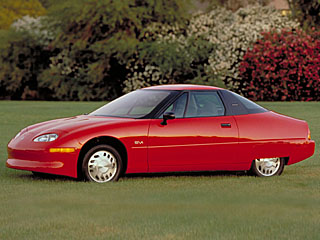
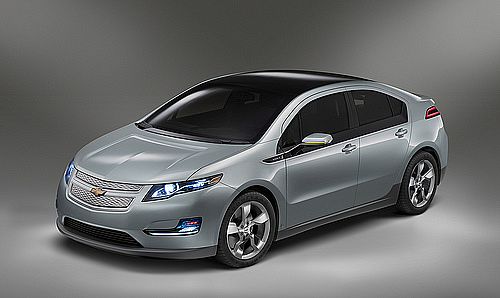

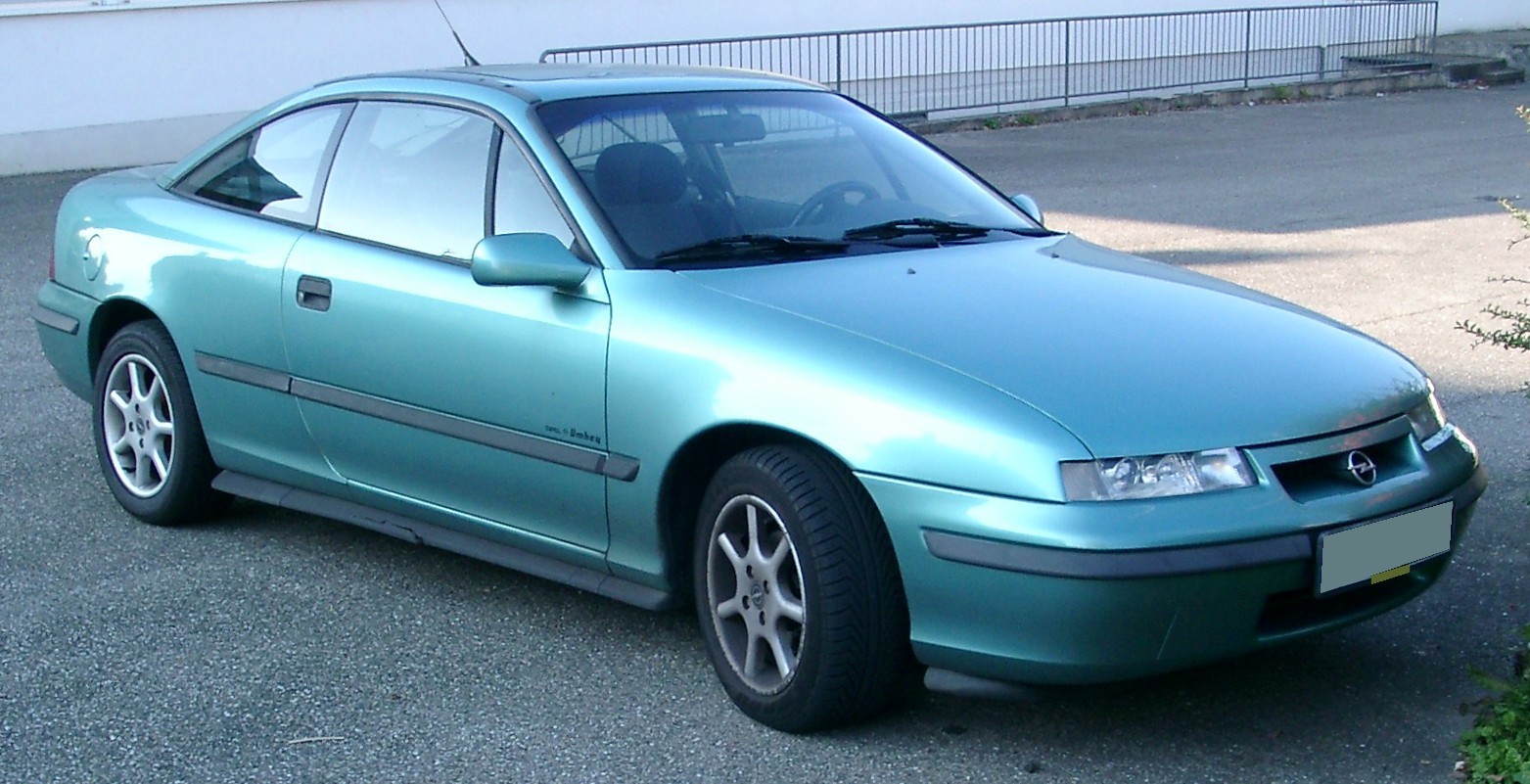


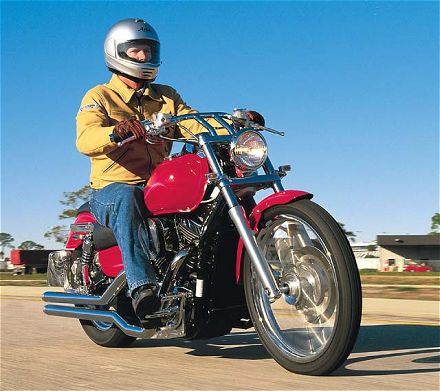
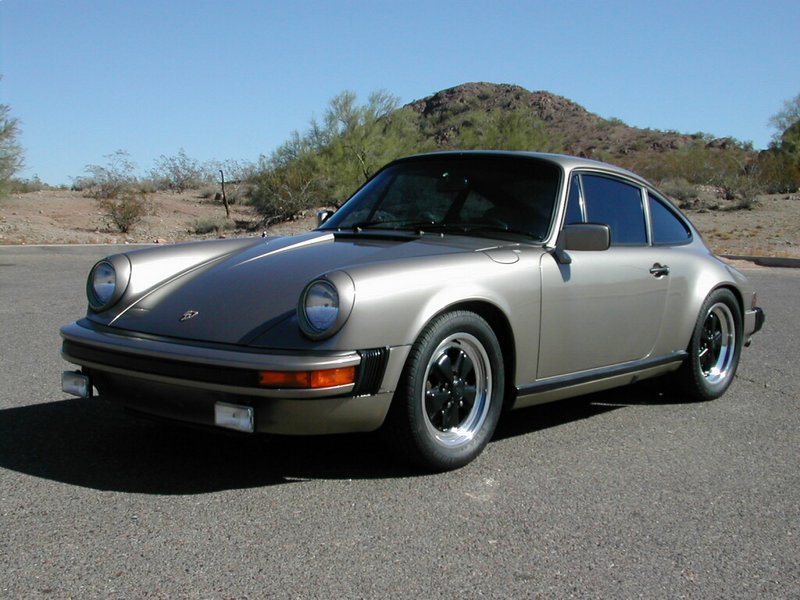
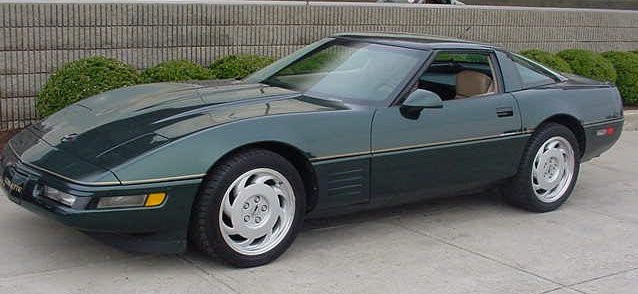
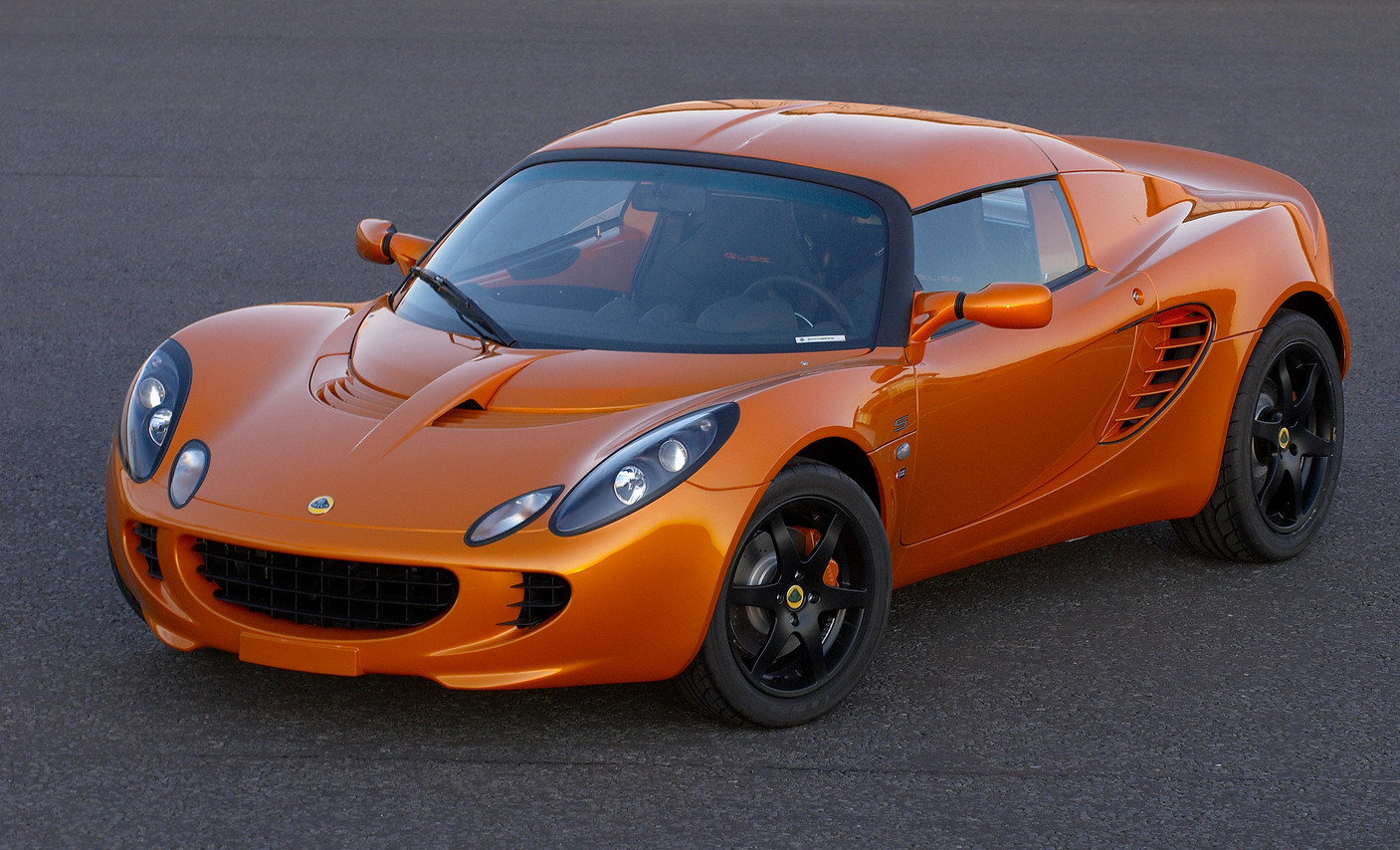
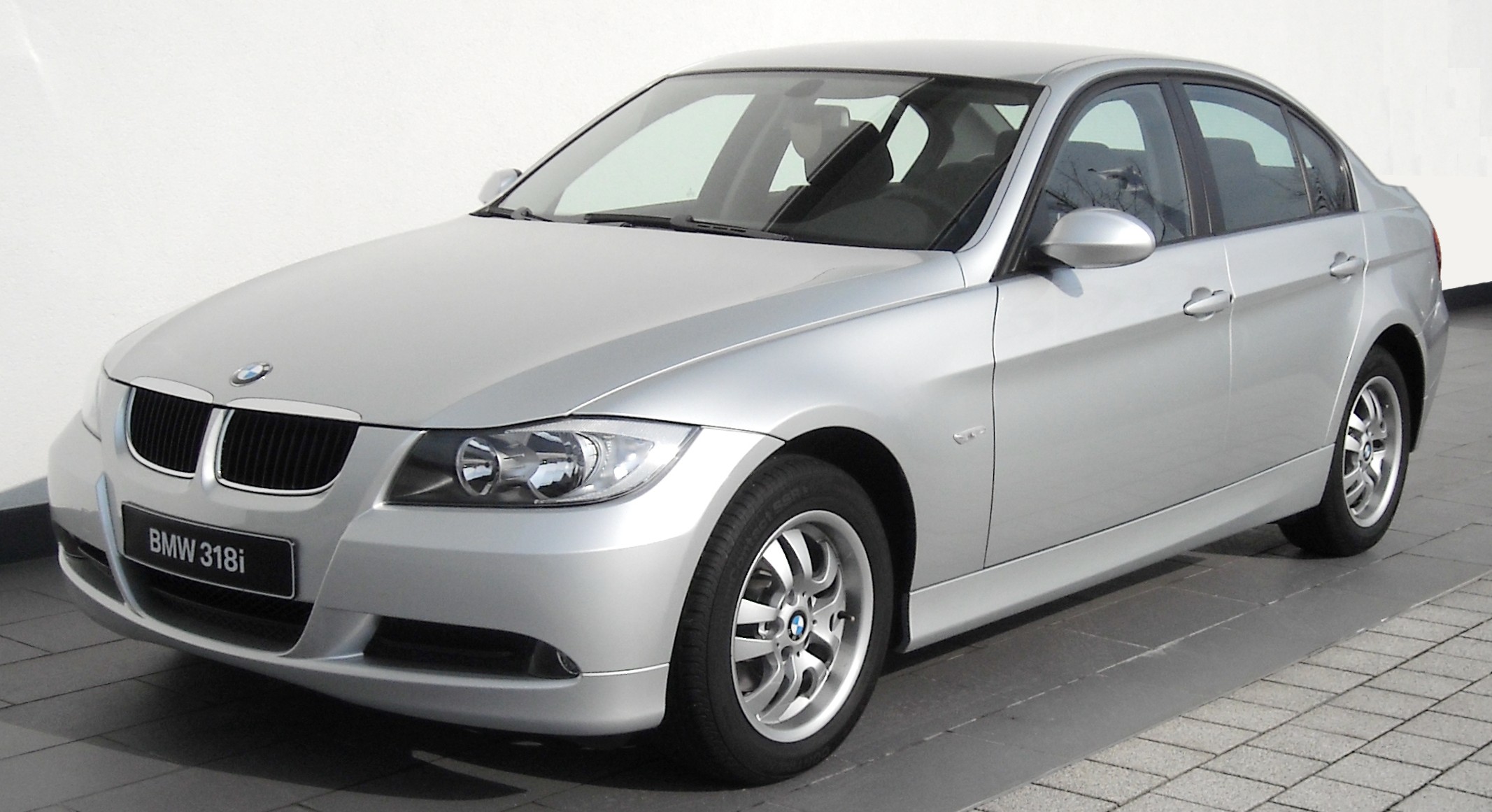
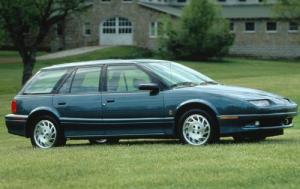
.jpg)
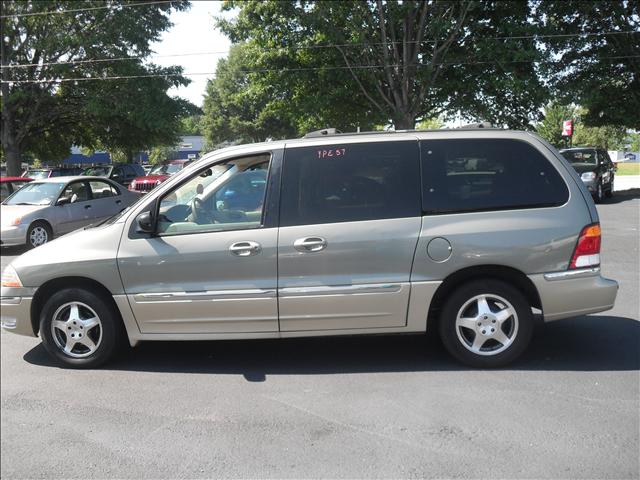
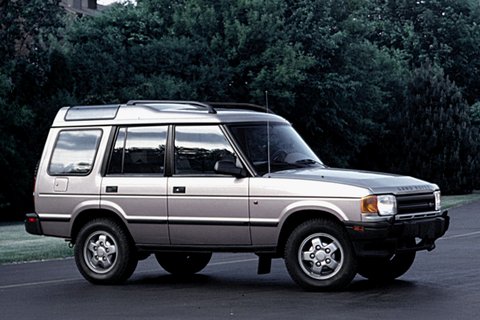


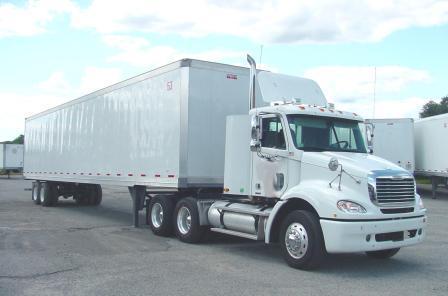

At the velomobiling linky there is this "redesigning infrastructure" section.
Please let it be better then this:
http://www.foundshit.com/pictures/signs/bike-lane-paint-error.jpg
http://i.treehugger.com/files/phonebox%20in%20bike%20lane.jpg
http://www.pixabella.com/wp-content/uploads/2009/01/spanish-bike-lane.jpg
Yes, it really doesn't do much good to have efficient vehicles to mitigate energy descent if they aren't afforded a practical avenue for conveyance.
Three wheelers are coming ...
"President Obama has signed legislation making high-efficiency two- and three-wheeled vehicles eligible for the same loans the department has granted to Tesla Motors, Fisker Automotive and others to spur the development of high-efficiency automobiles. There is no guarantee Aptera will get any money, as the law only allows the company to apply for loans it previously was barred from receiving.
http://www.wired.com/autopia/2009/10/aptera-doe/
I like this one ....
http://www.eliomotors.com/images/ELIO_middle.png
You'll see the Aptera above, and the Persu is also one of a growing number.
2009 Speed Challenge ...
http://www.recumbents.com/wisil/FordChallenge2009/default.htm
http://www.speedace.info/solar_car_bodywork.htm
I have had the priviledge of spending a lot of time underwater with these amazing creatures, my all time favourite fish to watch!
Note that the boxfish has a tapering effect on the latter part of it's body, which many minivans and other squareback vehicles do not. From your link, we can see this approach employed in an unusual design on the Mercedes Bionic, achieving a Cd of 0.19 (without reference to the cross sectional area).
It is important to note that a lower occupant position would reduce the cross sectional area, giving a greater reduction in CdA and overall fuel consumption.
This concept reminded me of Buckminster Fuller's Dymaxion Car. It made me wonder if making it a three instead of a four wheeler could further reduce it's drag coeficient, without significantly impacting it's handling and stability characteristics.
http://en.wikipedia.org/wiki/Dymaxion_car
Will (and Nate),
As a one time student in Aero & Astro, I would like to point out something which might be a small problem in your presentation.
You defined the area used in the drag equation as being the frontal area of the vehicle. Then, you presented a list of Cd values for different bodies, including aircraft wings. In aircraft design, the area usually used for wings is the surface or plan area, not the frontal area. That's because the corresponding variable of interest, lift, is a function of the wing area. And, for wings, lift and drag are measured or calculated as a function of angle of attack, since the lift increases with greater angle of attack. Please check your numbers to be sure that they are indeed intended for frontal area, not plan area.
About 25 years ago, I built a high mileage project vehicle. I used a small 100cc motorcycle and added a complete fairing around it. I tested it on the freeway at a steady 55 mph and achieved 235 mpg. I also found that it was very sensitive to cross winds, as might be expected, since it was rather like a vertical wing and had a vertical tail for aerodynamic stability. It was quite thrilling to ride while being passed by a dump truck, as the "bow wave" from the boxy truck tended to push the bike around quite a bit. Others have built similar vehicles over the years and there was a contest to test the various designs under simulated road conditions on a closed track. Back in 1985, the best design achieved 470 mpg...
Also of note is the fact that the lowest drag coefficients are the result of good aerodynamics at the rear of the vehicle. That's why hatch back coups do better than the vehicles with sharp cutoff rear ends, such as one sees in vans and SUVs. There is no way which I am aware of to reduce the drag on the rear of a van or SUV, since the gentle curves which reduce drag result in long aft bodies, which won't work on these larger vehicles.
E. Swanson
You are correct, lift and drag calculations for wings are treated differently, as those two factors are closely related to efficient aircraft design. On ground vehicles, lift is not sought (indeed, is discouraged), so the overall aerodynamic drag is the key variable, and virtually all ground-based vehicles use cross sectional area in their Cd calculations (trains and other articulated vehicles use a more complex set of calculations referenced above).
In reference to your link, I've had a number of discussions with Craig Vetter, who is in the middle of another design effort to create a high-mpg motorcycle/scooter fairing.
I agree with your assessment of aerodynamics at the rear of the vehicle (see image above). Indeed, even the air traveling under the vehicle needs to be considered in the overall streamlining design effort.
Also of importance, aerodynamic stability is another area of concern, as the drag on the rear of a typical car tends to stabilize the vehicle. Man powered vehicles don't (usually) go fast enough to produce much of a problem, but cars like the VW 1 Liter might prove to be a problem if the rear were fully faired. A design which works at 55 mph might go unstable at 75 or 80, which are now common speeds on the freeway. My first design resulted in unstable oscillations at around 45 mph, which I addressed by adding a vertical stabilizer on the rear. On a motorcycle, the drag on the rider's back provides some stability, IMHO. And, as you note, cross winds can be a problem as well.
So, all you kids out there playing in the garage, don't try this at home until you have your design checked by someone who understands aerodynamics...
E. Swanson
Yet another reason that we need to reduce highway speeds.
I expect that when fuel becomes very scarce and expensive that speeds will be lowered both by statue and by drivers themselves.
Fuel has not yet been expensive enough here in the states to make it good strategy to just slow down.The fuel savings are less than the increased expenses involved in paying commercial drivers to work longer hours(or drive by the mile at lower speeds)and the need for more trucks.
A few old fogeys drive thier personal vehicles at less than the normal speed to cut thier fuel costs but not many.If gas gets to ten bucks that will change.
And if the economy keeps going down hill, truck drivers will probably be glad to drive slower in exchange for a fuel savings bonus- something not yet common but not unheard of either.The shortage of trucks will take care of itself if there's nothing much to haul.
Something that has intrigued me is the possibility of adding some sort of airbags to existing trucks that could be inflated once up to speed out on the highway-they would have to be very tough and strongly attached and designed or customized probably for each individual truck model, but once inflated they might cut drag considerably.I have seen this idea batted around in various magagazines and on the net for a long time.
Might this be cost effective in the near future?
A little off topic but does anyone know how well current hybrids such as the Prius work in mountianous country?
Another somewhat off topic-if somebody builds one of these superstreamlined bikes and powers it with a really good three or four horsepower diesel(I'm not such such an engine exists commercially yet)it could maintain a good speed , probably thirty five or forty up a long grade with a heavy rider.
How many mpg would such a motorcycle get at a steady forty or forty five mph?
A job change a few years back took me from a bikeable job location to one that is 30 miles away in a bike-hostile 'job center' area with no reasonably safe approach for bikes. Carpooling now, whenever there are only 2 people, I drive my 2 seater Honda Insight at 55mph on a three lane 65mph toll road where people normally drive 75mph. When the oil price shock occurred last year, I started noticing people pulling up behind me in a recognition of 'hypermiling' at a more reasonable speed. I would often end up at the end of the toll road with 20 cars behind me, much like a caravan. When prices began dropping, the line grew gradually smaller; now there are rarely times when cars line up behind me.
If I stick to no more than 55mph, I can achieve mpg readings in the high 70s to mid 80s. At 65-70mph, it drops to the low 60s to high 50s.
On the topic of motorcycles with full wrap-around fairings and smaller engines, see the link E. Swanson posted above to Craig Vetter's motorcycle mileage competition in the 80s. Note the care taken with streamlining on the results achieved.
Will,
Are you getting this super mileage by driving technique only or have you made some modifications to your car? Thanks!
Driving technique alone. When I say no more than 55 mph, sometimes that means I dip down to 53-54. I don't do anything fancy, like turning the car on and off, and there is usually no one to draft behind at that speed.
Using low-rolling resistance tires also help.
John Taylor and his wife recently completed a 48-state drive averaging
67.9 miles per US gallon in a 2009 VW Jetta TDI.
http://www.nytimes.com/2009/09/13/automobiles/13MILEAGE.html?no_intersti...
Yes, my car came with low rolling resistance tires, and that will be part of the next article.
I was talking with someone in TDIClub about them, and he was telling me that the low rolling resistance tires were quite expensive. The question was whether using those tires would save enough $$ in fuel to pay for the tires or not. I think the conclusion was that it probably would, but it wasn't clear cut.
Maybe those tires have come down in price since then however..
My tires are Bridgestone Potenza RE92, which are not expensive (though that can be a relative term).
How do you like their ride?
Are there any compromises in terms of safety?
They are more than adequate in wet/dry traction; snow is not their strong point.
My take on them is it's probably not worth it to replace new tires, but the price differential if you are replacing a set anyway is minimal and will definitely pay off.
550 lbs at 30 mph on a 6% grade would eat 2.64 hp from the vertical rise. That's neglecting drag and friction.
2.64 HP is correct.
Assuming a diesel density of 0.835 kg/litre, a heating value of 42.5 MJ/kg and a 30% efficiency for a small diesel engine (normally aspirated) this means:
about 170.6 miles per US gallon (from the vertical rise only) [72.5 km/litre]
If the efficiency is 35%, then:
199 miles per US gallon [84.6 km/litre]
OLDFARMERMAC,
The Indian manufacturer BAJAJ makes a 125cc motorcycle that can attain up to
86 km on 1 litre of gasoline (202 miles per US gallon!)
The engine is a 4-stroke, 1-cylinder type with 2 spark plugs.
http://www.bdmautomotos.com/noticiasview.asp?key=22
A couple of years ago I dropped my highway speed on the commute from 80 (like everyone else) to the speed limit, 65. I noticed two things. First, was that driving was far less stressful, and second, was that my gas mileage went up by 10%.
Using the assumption that drag is the square of speed (I thought it was the cube) you cut drag by 33% but only improved mileage by 10%. Apparently factors other than drag have a greater effect on mileage. Some have claimed that mileage actually gets worse at speeds below 45 mph due to these other factors. Since the average vehicle speed is less than 40 mph perhaps too much emphasis is put on aerodynamics.
Drag is the square of speed.
POWER is the cube of speed.
Going at 65 means about 34% less drag (from air) FORCE than going at 80 MPH.
And, going at 65 means 46% less POWER (from air drag) than going at 80 MPH.
Power = Force X Speed
Gasoline engines operate with higher efficiencies at moderate RPM's and significant LOAD.
Below 45 MPH, very little power is needed to maintain speed, therefore
the LOAD on the engine is very low, and the gasoline engine operates with poor efficiency.
"if somebody builds one of these superstreamlined bikes and powers it with a really good three or four horsepower diesel(I'm not such such an engine exists commercially yet)it could maintain a good speed , probably thirty five or forty up a long grade with a heavy rider."
OLDFARMERMAC,
The original VW 1-litre prototype is powered by a 8.5 HP naturally aspirated diesel engine.
It could attain 264 miles per US gallon (0.89 litre per 100km)
The weight of that vehicle is just 290 kg (639 lbs)
http://www.seriouswheels.com/cars/top-vw-1-liter-car.htm
I don't know about diesel engines, but good low horsepower gasoline engines do not exist commercially. My school's supermilage racer gets 700 mpg (basically a recumbent trike in a fairing), but the winner of the last Shell EcoMarathon (Americas) got 2400 mpg with essentially the same design, but with a better engine. Both engines were running on normal gasoline.
Assuming 200 kg mass, a CdA of .15 and a speed of 45 mph, and a grade of around 15 degrees to the horizontal, I got 2 kw as the required amount of power. If you assume 2.5 kW once rolling resistance and transmission losses are factored in, I estimate 170 mpg under those conditions. That's with 25% thermal efficiency in the engine, I have no idea if that is possible with a small diesel or not.
I just zipped over the "hill" to San Francisco from Reno and back in my 2005 Prius.
(Hymotion pack thought it needed replacement, no more 75-99+ mpg on local drives and its switch LED was blinking at me).
While the engine strains going up out of Truckee to the pass, I can keep up with pretty much anyone who's not speeding too much.
Mileage drops of course, on the serious uphills at 65 going on 70 (by accident of course;-), I only get 15-20 mpg.
The nice part is once over the summit, it's 55+ mpg total from Reno to Sacramento (even with a dead Hymotion pack - which would have been used up halfway to Truckee anyway.)
Coming back uphill is only 45 or 50 mpg (Sacratomato elev. 25 feet, Donner Summit Eastbound 7227', Reno 4500 or so.)
Trips to Incline or Virginia City (winding roads) are speed limited by the curves, not the grades.
Not as peppy as the old Saab turbo to accelerate while at speed, but not an embarrassment.
Nice to have the engine brake at times, often going down from Donner Pass into Truckee with traffic I'll want to keep the speed down and the stock battery gets fully recharged fast, then I'd have to rely on the brakes really touching, so just shift into "B".
The Prius has been to Colorado (Vail) twice, once via (soon to be)Glacier(-less) National Park, several times to Oregon (Bend/Mt. Bachelor, then on to Portland), Flagstaff, San Diego via Palm Springs, etc. Jevons Paradox I guess, 71K miles on a 4 year old car, with a work commute of 7 miles one-way.
Only issue is in snow - clearance is very low, so I wouldn't try un-plowed snow deeper than about 5-6 inches. For this, I have a diesel Ford F-350 4WD, with about 2000 miles in 2 years, that has never been farther than the local ski areas or Lovelock, NV (90 miles East of Reno).
If you don't mind using control surfaces, you can add a yaw damper for stability. There are ways to use air-driven gyroscopes to provide the yaw-rate indication. It may also be reasonable to have feedback from the steering angle to help fight gusts.
That drag stabilizing effect is important. I experienced it in a place you might not expect. Back in the late 80s early 90s carbide saw tips became cheap and everyone got in the game with new designs. One outfit made great efforts to reduce the drag the tailing part of the circular saw blade had as it reentered the cut. It was noticebly easier to push that blade through material but there was problem. It was almost impossible to make a straight cut with it. A certain level of blade drag ended up being necessary, or at least way to expensive to design a way around. With our current sprawl, the range of speeds vehicles will have to operate in for some time to come will probably necessitate more drag being left in the designs than many would like.
I've met Jim Corning at a local alternative vehicle expo. He's working on a fully faired motorcycle too.
http://prometheussolar.com/Motorcycle.aspx
Mr. Corning does a good job of laying out how simple (and economical) it is to replace gasoline as a transportation fuel. This is why predictions of $500 oil and other various doomer scenarios are so absurd.
RE; Rear Drag..
I've been toying with the possibility of getting myself a Small Pickup Truck to convert to Electric as my local working and errand vehicle, and wondered if I would get an advantage out of making a Bed-cover that sloped in a positive curve down from the Cab roof and then Duck-tailed out beyond the tailgate, removing those two flat turbulence areas.
It would be able to lift up to become a level roof when the load demanded it, but for many trips, could very probably remain down and tight. (and if fortune was smiling on me, this roof would also be laced with PV panels, for a little steady income, tho' I know this wouldn't amount to more than nickels in the truck's power demands)
Yeah, I thought of something like that too when I bought my PU 11 years ago. I never got around to it, especially as my most often use fo the truck was for hauling lumber or sheet rock to build my house. One can easily cut the drag quite a bit by simply leaving the tail gate down...
In another job situation, I worked on the aerodynamics of rail cars, specifically the open hopper cars often used to haul coal. With those, the end bulkhead in each car is a drag generator when running empty. Put a top on the cars and the drag is cut considerably. Going on 18 years later, the RR's still don't do that. Now, think of how much diesel fuel has been wasted since on all the unit trains with 100 cars that returned to the mines empty. Gotta love economics...
E. Swanson
I've decided to use a trailer in those situations where I need extra carrying capacity. I've also planned out a purchase of a bike trailer for those loads which could be moved by bike.
One of our city councilors rides around town with a trailer like that one, little sparkles of hope out there.
'A dozen or so points of light'...
.. and I just voted for him again, having also seen him on the street as I walked my daughter to school earlier. Boy, it's nice being on foot.. I had two or three small exchanges with neighbors in our 3 block trek.
Craig Kelley! I voted for him too--largely on the basis of his and his wife's cool bike trailers and extenders and so on.
Good to know that there are TWO such councilors... but
Nope, this is Dave Marshall, Portland Maine.
____
BTW, I'm running in and out of the yard today, taking loads of CompostMulch and Bricks to/from the Community garden, a block away, hauling everything on the Halloween Bike/Wheelbarrow float that I assembled last weekend. Hard working wheels!
Essentially, it's that 'Ox Cart', I guess. So my costume is now an 'OX'. Lorelei will be pleased.
Don't want to sound too silly, and I don't know if Mythbusters is a valid data source here :p, but wasn't there this Mythbusters episode where they tested when a truck drove more fuel efficient: tailgate down or up?
Their result was that the tailgate up was more fuel efficient and they explained it because the tailgate would cause a 'horizontal vortex' in the loading area that directed most of the air coming over the roof to the rear of the vehicle smoothly. And in a followup episode they found out that a mesh covering the loading area was the most efficient over tailgate up/down, hardcover or mesh.
Mythbusters also tried the golfball dimples idea on what looked like a Ford Taurus and improved mileage by 11%.
Time to get out the hammer and a blunt nail.
Of all the experiments I don't want to envision explaining to my wife..
a good hailstorm would do the trick. :-)
Dimples work by creating turbulence which adds energy to the boundary layer and helps it stay attached to the surface. Vortex generators are used to do the same thing. There are ways to make vortex generators which could be attached with magnets or something like spirit gum. You might try it.
Too bad they used two trucks side by side one with tailgate up and the other down. They never bothered to switch modes or drivers making the results very suspect.
I've heard that claim about the MythBusters test before. I haven't seen the episode (not having a TV hooked up), but I suspect that the test involved a large PU with an engine sized for hauling lots of mass. In that situation, the engine probably is producing rather little power, thus is running at a low efficiency. In that situation, increasing the drag will also increase the efficiency, which might offset the benefit of any reduction in aerodynamic drag. If the test had been run with a smaller truck using a straight shift transmission, the results of the drag reduction might have been more apparent. Or, if the MythBuster crew had used diesel trucks, the effects of load change would have been reduced, which might have produced different results.
It's clear to me that there is less drag with the tail gate in the down position. An easy way to prove that is to do a test coasting down a long hill on a freeway, such as one might find in the mountains. By putting the transmission in neutral or holding the clutch in, the vehicle speed will reach terminal velocity, which is a function of overall drag. If the slope of the hill is just right, that might be just below the speed limit. Perform the test both with the tailgate up and with it down.
For my older, smaller Mazda/Ford Ranger with the 7 foot bed, running with the tail gate down results in a faster terminal velocity. I've also noticed that when driving up such a long grade, I can stay in high gear longer with the tail gate down than with it up, which also indicates less drag. Do your own test...
E. Swanson
A couple decades ago I built a wooden tool box for a 1988 full size bed regular cab Chevy pickup. The design was accidental, in as much as materials at hand and tools needing shelter were the most important factors. That year GM put the shelf support in the bed so the tool box was elevated. I tilted its lid forward for drainage away from its rear facing tailgate styled door. The 4 foot front to back and just under 5 and half foot wide box roof tilted about 1 1/2 inches forward from bed level, extended forward to about an inch from the cab rear window the high rear edge of it was about the height of the center of the same window. I drove that truck for 188,000 miles and ran the same trips repeatedly both with the box on and off, depending on what load would have to be hauled one way or the other. For years I kept an accurate mileage log. It ended up that on the same 200 plus mile trip I consistently got 21 to 22 mpg with the box on and never exceeded 20 mpg without the box in either tailgate on or off configurations (though the latter was rare--I had a truck because I hauled stuff and the tailgate up or down generally facilitated that quite a bit). This was highway speed mileage and 68-72 mph with the box was often the best. I always thought it would be interesting to see just what location of a plane like my box roof would give the best performance at given speeds. That old chev was 4.3 litre vortec V6 with a 5 speed w/OD standard transmission and relatively mild standard 1/2 ton pickup rear end (the automatic trany rear end was steeper).
REAR-MOUNTED AERODYNAMIC STRUCTURE FOR TRUCK CARGO BODIES
http://www.wipo.int/pctdb/en/wo.jsp?WO=2008144025
http://www.faqs.org/patents/app/20080309122
Here's another link to a tractor trailer truck drag reduction project:
http://people.clarkson.edu/~visser/research/drag/truck/index.html
This device is a set of rigid vertical panels and flexible top and bottom panels. The vertical panels were hinged so that they could fold flat against the open doors during loading and unloading.
Prof. Visser and his students (undergraduate and a few graduate students) have found that it's relatively easy to knock 10% of the drag with a simple aft body extension that fits within the legal length restrictions for such devices. Filling the gap between the cab and trailer is another way to pick up a quick 5 to 10% drag reduction.
That goes back to NASA work in the 70's; I wrote a piece on it a few years ago, which I was unable to get published.
One of the more interesting issues is that decreasing the aerodynamic drag at the front of the vehicle increases the losses due to base drag at the tail (not just relatively but absolutely), so the fairing of the rear of the vehicle becomes even more important. I suspect that active surfaces (blown with air or engine exhaust) could not only reduce drag further, they could be used to stabilize the vehicle against gusts and sway.
One important aspect that doesn't recieve a lot of publicity is the effects on drag and handling of wind. The simplest case: wind in the direction of travel can perhaps be estimated by replacing V squared by V*(V+W) where W is the (signed) wind speed (positive = headwind). The effects of a crosswind are likely a complicated function of geometry. I certainly have noticed that my Prius doesn't get as good a milage in high cross winds, as in calm air.
If we had purely laminar flow the only loses would be due to viscosity. I believe viscosity drag is much smaller than that caused by the turbulence and separation. That area in your drawings labeled "dirty air" behind the vehicle has low pressure, which essentially can be thought of as sucking the vehicle backwards. Reducing the rear facing area of separated flow (and perhaps reducing the pressure drop), are probably the most important things for reducing drag. What sort of aftermarket farings, or deflectors are available, and how well do they work?
You are indeed correct, which is why I used the rather subtle definition;
"v = the speed of the object relative to the fluid"
Crosswinds bring in another level of complexity to this discussion, and as this article is trying to reach the overall population, I decided to hold off on such details. Good to know that some here are knowledgeable in these areas.
I can feel cross-winds on my high-performance road bike, more so than on a low-end bike. The reason is the wheels have flattened spokes and the wheel rims are taller. This gives the wheels very good stiffness but the cross-section to perpendicular winds is much higher. I had read about this and can confirm that it is real. That's probably the reason I wouldn't ride a fairing bike. I have almost been blown off the road by cross-winds and I can imagine that it would be that much worse.
Hope we hear about the percentage energy loss from drag in the next installment.
That varies widely depending up vehicle, speed, driving profile, weather, etc.
I don't know. You don't see too many people using the aero Hed wheels day-to-day.

They work great for racing, but get hit with a cross-wind with those on and you may go off the road :)
Hi WHT,
Here is another view of my style of bike - try one and see if you can ever go back to a DF:
http://www.bacchettabikes.com/support/performance.htm
Kind of funny tho - when my bike is parked, people sometimes ask if I "pedal" with my hands.
I probably wouldn't use one until I get older. I do a bit of climbing in the Alps and I spend lots of time off the saddle.
Hi WHT,
Climbing is a bit harder but my younger friends with these bikes do remarkably well. I've done mountain climbing with my Volae but then I don't mind walking the really steep inclines.
I was 63 or 64 when I switched from a DF to the high racer recumbent bike. I was ready to quit biking as so many body parts were hurting. The Volae made all those pains disappear. So, if you are younger, I understand wanting to stay with a DF - just keep these high racers in mind (and forget about all those long wheel base recumbents with the little front wheel - I doubt you would ever be happy with them)
The Tadpole Velo I hope to build (long list of 'hope to's') .. would be experimentally fitted with Hand-lever arms that can provide power to the wheels for balancing the muscle demands on the rider. There would be a compound joint at the handle end to manage steering, I think.
Hi Dave,
Looking at a couple of pictures of recumbents leaves me thinking they might be a handful in a pinch -such as a sudden stop or fast lane change.
Are you at a higher risk for an accident , or does it just look that way?
Hi Dave,
You ride a lot and are probably in as good a shape as any in your age group (I'm not quite there yet), so what sort of long extended grade gets too steep for that rig? Is five to seven hundred feet in a mile or so much of a problem? I like the looks of that bike but that is part of my daily climb. The other section is about that many feet in half the distance, but walking of some that wouldn't be much of an issue.
Luke
500 meters in 3 km for me.
WHT thanks, that would be about 16% grade. I checked around a little more and found guys on recumbents handling 18% grades of about a mile a little quicker and ending up with slightly lower heart rates than when climbing the same on straight barred mountain bikes (what I now have), 12-14% might be what I can work into, definitely looking into the feet forward machine this spring. Right now I'm hoping a bit of Hawaii can come our way, we could use a quick foot or two of snow base. Nothing gets it up here quicker than a good flow over the mountains from the central Pacific, but I just don't see any sign of such yet. Too icy for me to bike right now and not enough snow to break out the X country skiis.
It seems to me that a partially faired bike would gain much of the benefit without so much crosswind penalty.
Of course, with pure HPV's it is important to remember that you also need to optimize for weight to deal with uphill grades. Hybrid HPV's will gain more from fairings.
Excellent post!
Another potential reference:
Locomotion: Dealing with friction, 1998 (Radhakrishnan V, Proc Natl Acad Sci 95:5448-5455)
To put some of Engineer-Poet's ideas on The Ergosphere back in the mix:
Out of Town on Rails
Blade Runner
Nice reference which also has bearing in other parts of this series; thanks!
I caught a show on Myth Busters. It's premise was the effect of using dimples on a golf ball. The myth, a dimpled car would be more aerodynamic and get better gas mileage. To their complete astonishment the dimpled cars DID get better mileage. And not just by a smidge They used old large boxy cars, put a bit of gook on them. Dimpled the gook (plaster of Paris?), and let it dry. Each and every time the results were very good. I believe it was around 11 percent improvement by just dimpling a boxy shaped car.
And then there's the whales..
Bumpy whale fins set to spark a revolution in aerodynamics
http://www.gizmag.com/bumpy-whale-fins-set-to-spark-a-revolution-in-aero...
.. and a little more detail and some sketches of experimental Wind Turbine blades here..
http://www.rexresearch.com/whalewing/whalewing.htm
Shark skin
Here's the digg, reddit and SU links for this post (we appreciate your helping us spread our work around, both in this post and any of our other work--if you want to submit something yourself to another site, etc., that isn't already here--feel free, just leave it as a reply to this comment, please so folks can find it.):
http://digg.com/d318zTN
http://www.reddit.com/r/energy/comments/a0j3y/the_future_of_fuel_economy...
http://www.reddit.com/r/environment/comments/a0j3q/the_future_of_fuel_ec...
http://www.reddit.com/r/Green/comments/a0j3s/the_future_of_fuel_economy_...
http://www.stumbleupon.com/submit?url=http%3A%2F%2Fwww.theoildrum.com%2F...
Find us on twitter:
http://twitter.com/theoildrum
http://friendfeed.com/theoildrum
Find us on facebook and linkedin as well:
http://www.facebook.com/group.php?gid=14778313964
http://www.linkedin.com/groups?gid=138274&trk=hb_side_g
Thanks again. Feel free to submit things yourself using the share this button on our articles as well to places like stumbleupon, metafilter, or other link farms yourself--we appreciate it!
Will, this is a great article. I think it can be strengthened by rewriting or eliminating the following:
The choices are broad: at a high level, land use planners could refine cities into a series of compact, carfree urban districts interconnected with mass transit.
Urban redesign is a very long-term project, and has much more to do with life-style satisfaction than energy savings.
As we've discussed before, HVAC in existing urban multi-unit buildings is less energy efficient than in suburban single-families, so we're talking rebuilding everything to get energy efficiency. As you know, building design is more important than multi-unit vs single-family. If we're going rebuild everything, we can get energy efficiency regardless of the land-use configuration. IOW, life-style satisfaction will drive land-use, not energy.
For the existing built-out suburban and exurban communities, however, such choices are limited. Aside from telecommuting, transportation choices will increasingly include biking, carpooling/vanpooling, bus rapid transit, and other efficient means of transportation.
Liquid fuel consumption is easy to reduce with hybrids, PHEVs and EVs. Such a reduction is far faster and more cost-effective than urban redesign. Bikes, carpooling, BRT work just fine, but for those who want conventional vehicles they'll just be a bridge to hybrids, PHEVs and EVs.
-----------
Now, on to more important things: I didn't see the latest generation of Prius in your diagram - I'm curious how it did.
I'm amazed the CdA of the Volt is so low, and the typical bike rider is so high - could we see a table of the underlying Cd's and A's?
So, it takes more energy to push the average bicyclist through the air than a Prius or Volt (at the same speed)?? I wonder what the overall energy consumption would be at comparable speeds (including drive-train and tire friction)?
I would have a different perspective on a number of your statements;
I believe cities that are much more walkable and supported effectively by mass transit would have considerable energy savings over cities that relied heavily on single passenger automobiles.
Or biking, carpooling, and BRT could become a new sustainable lifestyle that becomes recognized as a way to become less addicted to oil and coal.
Besides the obvious physics answer which would point to multi-unit buildings as being more energy efficient, one also has to take a look at other factors;
- When were the buildings built? Before or after energy codes where initiated?
- Structurally sound buildings with poor energy efficiency do not have to be torn down; external insulation renovations are becoming quite common now, and efficient updated HVAC systems can replace old ones.
- It's hard to build single family homes in cities due to the amount of space they require. And if such space is set aside for SFHs, then transportation energy use will rise.
The current generation of the Prius is almost exactly the same CdA value as the 2nd generation.
This is indeed a wakeup call, which is why we are highlighting aerodynamics in this article. Of course, keep in mind the speed ranges and weight differences involved between a bicycle and a car. Yes, rolling resistance, drivetrain friction, and other factors come into play.
Will, I agree completely with your perspectives, and yet....my points still stand. Your article started with "As oil production falls and volatile oil prices in concert with a struggling economy ...What should governments at all levels be proactively preparing for?" This suggests that the following discussion is intended to address how land-planners and governments should respond to these energy problems.
I support a move to more human-friendly living, but I don't see energy as an especially strong driver of that move. Changes in land-use are extremely slow, and far more expensive than simple changes to hybrids, PHEVs and EVs. I believe casting improved modes of living as a primary solution to energy problems is a disservice both to land-planning and to energy mitigation.
So:
No doubt. But building them will take many decades; cost far more than any energy savings; and the energy used by PHEVs and EVs is electricity, which can be derived very cheaply from wind (building additional wind is very, very cheap: $2k worth will power an EV for life! - compare that to any conceivable housing or urban planning investment). Finally, the fact that such cities would be far more livable is much, much more important than any energy savings.
Sure. That's consistent with what I said: "Bikes, carpooling, BRT work just fine, but for those who want conventional vehicles they'll just be a bridge to hybrids, PHEVs and EVs.". That means that no one will be forced to new modes of transportation by energy prices.
Of course. And yet, overall, existing multi-family buildings are much less energy efficient than existing single-family buildings. Right? So existing multi-family buildings are going to need much more investment than existing single-family buildings. (Besides, the lower ratio of surface square meters to interior cubic meters is much less important than the ratio of window square meters to interior cubic meters, and that ratio doesn't have that much to do with building form).
New construction, whether it's urban or not, can be made extremely efficient regardless of whether it's multi-unit or SFH, and this can be done with relatively small additional cost. Transportation to those homes, wherever they are, can be made very low-FF/CO2 very cheaply. Choices of location or building type really don't dictate energy consumption per se.
So...what's my suggestion? I would suggest that you clarify that improved vehicle efficiency and electrification are by far the fastest, cheapest and most important responses to PO and oil-related CO2 emissions.
I'm rather surprised to hear a TOD regular say that.
I'm not talking about building new cities, or radically rebuilding what we have. Simple changes can be made with extremely little investment;
http://local.theoildrum.com/node/3333
http://www.theoildrum.com/node/3580
Sounds like you are a 'soft lander'.
I would by no means make such a sweeping statement. If people in some apartments don't pay for electricity and heat, they will no consume them wisely. Are you comparing condos where separate bills are made out for each owner?
Simple thermodynamics tells us the multi-family buildings are more energy efficient than single family homes all things being equal.
I have no problem agreeing to disagree.
I know. And yet, I think it's true. I like urban living. I drive only about 2,500 miles per year, my residence has a walkscore of 92, and I take an electric train daily (or telecommute). And yet, I pay a large premium to do it, a premium which is far larger than any energy savings. If I had less money, I would live in the suburbs, and find other ways to reduce my energy consumption. People live where they do because of fundamentals which are pretty powerful, and changes in energy prices won't alter that very much.
1) the discussion at the top of the Post: "refine cities into a series of compact, carfree urban districts interconnected with mass transit." suggests pretty large redesign. BRT simply reduces personal transportation. It doesn't build more urban housing units, or move anyone into cities.
2) BRT isn't especially energy efficient: Alan Drake hates it - http://local.theoildrum.com/node/3580#comment-302117 .
Well, that's a different discussion. It's clear to me that technical solutions exist for PO and CC. On a personal level, that's especially clear: anyone who wants to buy a bike, or carpool, or buy a Prius (and then modify it into a PHEV pretty cheaply) can do so.
On a social and national economic level....that depends on a lot of things, including resistance to change from those who stand to lose careers and investments. That's tougher. My best guess is that oil importers like the US have a large risk of some years of economic stagnation (roughly on the order of Japan's recent experience) or reduced economic growth - definitely not BAU as defined by most people.
True - if all rentals got separate meters, we might see a change. Hard to know how large that effect is. The difference between the average multi-unit and SFH energy efficiency is quite large. see http://energyfaq.blogspot.com/2009/01/is-urban-housing-more-efficient.html
1) Thermodynamics really isn't that straightforward. You're talking about the ratio of surface square meters to interior cubic meters. But, that's much less important than the ratio of window square meters to interior cubic meters, and that ratio doesn't have that much to do with building form. And,
2) "all things being equal" is a very, very big loophole. With that loophole then the statement is true - but, the loophole is so large that the statement is made trivial (or worse, misleading).
Sure, but I like to thrash things out till we reach consensus. I certainly think that's possible.
Unless the renters also got control over the efficiency of their appliances and other physical plant, it would probably have a negative effect. If the landlord rolls utilities into the rent, renters can gauge total cost reliably; if the landlord neither pays nor discloses utility bills, the cheapest refrigerators, water heaters, air conditioners and furnaces will be the rule and efficiency will go out the window.
True.
Not to mention that in many, if not most, apt buildings with central HVAC, metering would be essentially impossible without a complete reconstruction of the HVAC into each unit - something like a condo conversion.
Lots of rentals in this area come without appliances-but renters and landlords are likely to buy energy hog appliances because they are cheap to buy.But an energy hog washing machine is a bargain compared to the laundromat.
As a small-time landlord I struggle with this often. Today there is little incentive for a landlord to upgrade anything -- only a few percent of renters will factor in utility bills when comparing rents, and the paybacks are so long that it rarely makes fiscal sense. I go above bottom-grade out of conscience, but I can't afford to do all I'd like to.
It doesn't help at all that tax incentives don't apply -- giving me a tax credit to upgrade HVAC on my houses would save just as much energy and just as much money long-term as for the house I live in.
"But building them will take many decades; cost far more than any energy savings; and the energy used by PHEVs and EVs is electricity, which can be derived very cheaply from wind (building additional wind is very, very cheap: $2k worth will power an EV for life! - compare that to any conceivable housing or urban planning investment). Finally, the fact that such cities would be far more livable is much, much more important than any energy savings."
I agree with you Nick that building new cities will take many decades. There are few if any cities around the world that are yet to be built as all the best sites have beenoccupied. What is more liley to happen in exisiting cities are they will be redesigned and rebuilt, around exisitng infrastrucutre and natural features, to take account of changing liefstyle options in the face of more expensive transport energy costs. Fixed energy use will have a much smaller influence on lifestyle choices becasue, as Will says, buildings are more easily renovated for heating cooling which is the highest fixed energy users. Moving stuff including people around is much harder and will drive the economic cost of things higher when oil prices increase. People will make lifestyle choices by changing their consumption patterns, but this will only be observable over the long term. The Phevs may be a stop gap until the cities eveolve to reduce the need for individuals to drive a car everywhere for survival, but ultimately, even they will become luxury choices.
Cities rebuild themselves continuously.
Some cities have rebuilt to take advantage of new infrastructure. I used to work in Arlington VA many years ago, not too long after the Washington Metro was built. Arlington made a conscious decision to leverage the Metro investment; twisted arms to have it run through the center of the older commercial areas instead of an expessway median, then changed its development codes to encourage higher density near the transit stations.
Simultaneously, they pushed for bike lanes any time road improvements were done. As a result, it has become one of the most walkable, bikeable, transit-friendly areas around Washington.
And it only took about three decades!
That's nice to hear. That's a good thing for everyone - better lifestyle, safer, less fuel consumption.
OTOH, as you note - it took a while. As a wild guess, the average resident may have reduced their personal VMT by 30%. So, it only took 30 years to get a 30% reduction. OTOH, one can buy a Prius in a day, and reduce fuel consumption by 50%...
I agree about cities and HVAC.
Moving stuff including people around is much harder and will drive the economic cost of things higher when oil prices increase.
Moving stuff around isn't hard. Trains move freight quite nicely. Bikes, carpools, hybrid/PHEV/EV cars do as well.
ultimately, even (cars) will become luxury choices.
PHEV/EV cars won't be any more expensive to run than now.
Trains are only good for moving large bulk quantities long distances. They arent't really that good at delivering concrete mix to buidling sites for example, or bread to the back docks of supermarkets. Cars are good for moving people and their own stuff, they aren't that great at moving bulk goods. Will's example of moving a refrigerator on a bicycle is fine, but he didn't pick it up direct from the factory by bicycle. The factory in turn didn't have all the components of the refrigerator delivered by bike or car and it is unlikley (though I concede, not impossible) that train lines run directly into the factory either. It is pure fantasy to imagine trains can repalce the current roadfreight system of point to point delivery.
I would also challenge your assertion that PHEV/EV will cost no more to run than now. If and when these vehicles ever hit the road, they will be expensive to buy. The rumoured price of a Mitsubishi i-Miev is $65K AUD (now about par with USD)for what is essentially a toy car. I can buy a large six cylinder car for 1/3 of that and have $45K up my sleeve to fill it with petrol. At current prices and my driving habits, that gives me about 23 years which if i am diligent and careful, should be the life of the car. A toy car will deteriorate much faster and won't do all the jobs my larger car can. by making this choice I'll also be preserving cash which might be useful in moving to a more walkable place. maybe I'll then just hire a car when I need one.
The point is, demand for PHEV/EV's is very uncertain. Without high demand and production, the cost may not come down fast enough to present as the only alternative transport strategy in an oil constrained world. Running our old clunkers, Cuba style, while diligently rebuilding our cities to accomodate PT and HPV is based on what is possible with what we have now, rather than a techno fantasy that is struggling to draw breath.
Trains are only good for moving large bulk quantities long distances.
Well, 1) in the heyday of trains, they made a lot of local deliveries. Of course, most of that track has been ripped out, but it can be done. and,
2) electric trucks work just fine for the last few miles. You're familiar with inter-modal container shipping, right?
A basic EV is very cheap. There are tens of millions out there, carrying containers in warehouses and golfers on the links. Highway capable EVs are expensive because manufacturers are trying to make them as attractive as possible, with li-ion batteries and optimized motors, aerodynamics, electric accessories, etc. As you note, these things require volume production to bring their cost down.
Yes, volume production of PHEVs isn't here yet. OTOH,
1) the Prius has a full electric drivetrain, and there's a million on the road. The Prius costs less than the average US car. An aftermarket plug-in modification for the Prius only costs $7K-$10K - that will be rather less at the factory.
2) I really don't think there's much question that volume production of PHEVs/EVs will happen. GM is building it's future around the Volt. Nissan looks extremely serious about EVs. Toyota is developing a plug-in Prius (not that this isn't an easy upgrade...). US CAFE requirements will make PHEVs almost mandatory.
"Well, 1) in the heyday of trains, they made a lot of local deliveries. Of course, most of that track has been ripped out, but it can be done. and, "
The kind of local deliveries they made were into the centre of compact cities where all the warehouising was crowded around the rail yard. I live in one such town where we now have a dead rail yard in the middle of town and a new intermodal freight terminal built way out of town and is scaled to a size to service an area of 400km radius around it - by trucks.
Even in their heyday, trains did not deliver as much freight as is on the road today, servicing an expanded population. The goods on those trucks represent the output and consumption of the economy which will have to be downsized dramatically to adjust to the rail scale you propose. The market mechainsm will then become prominent as consumers decide what is important to deliver and what isn't. Price rises for consumer goods will follow and this will have a big impact on all decisions including where and what we live in and how we get around. Some of us who have to make investment decisions today on infrastructure that will be with us for the next hundred years need to take all of this into account and cannot just assume that an inferior electric car technology is going to be the saviour for BAU in an oil constrained world.
The kind of local deliveries they made were into the centre of compact cities where all the warehouising was crowded around the rail yard.
Well, no. There were many spurs which went to individual customers - warehouses, factories, etc.
Even in their heyday, trains did not deliver as much freight as is on the road today, servicing an expanded population.
True.
The goods on those trucks represent the output and consumption of the economy which will have to be downsized dramatically to adjust to the rail scale you propose.
If that were the only solution, it's conceivable that would be true. Fortunately, that's not the case. Diesel will be around for many decades for limited use like "last-mile" delivery, gradually being replaced by electric drive.
Hi Will,
This is my bike:
http://www.hostelshoppe.com/images/products/lb_10vol_team_carbon.jpg
I can assure you that the aerodynamics of this bike are totally different from the one you tested - and almost anyone of any fittness level can ride one of these with none of the usual pain points (butt, neck, back, hands) associated with the typical bike.
I'm an old guy that just creeps up big hills but then blows by kids that are 50 years younger on the down side of the hill.
BD,
I was referring to typical upright cyclists, not those in aero tucks or recumbents. See the values above for aero tuck cyclists and velomobiles (fully faired recumbents).
Actually I was quite impressed with the EV-1. Really had a lot going for it, so many years ago. And so few left......
At slow speeds, such as found in mass transit in cities, I wonder if other factors are more important. On the university campus where I work for example, I've observed that the buses appear to be inefficient, perhaps because they use a chassis that was designed for hauling extremely heavy loads, so the vehicle must accelerate and move a great deal of excess weight. My impression is that commuter buses tend to be very poorly designed in relation to their intended task.
(The turbo-charged diesel engines these blunt, overweight buses are equipped with are extremely noisy too! :-)
the vehicle must accelerate and move a great deal of excess weight.
The problem isn't the acceleration or moving, it's the braking which wastes the most energy. Thus the importance of hybrids with regenerative braking.
Nick,
Your objections are puzzling me today. Braking is only the final discarding of energy that was already wasted by moving (accelerating) an overbuilt bus, as the original post declared. Regen is a great additional step, but it's surely more important not to be moving vehicles around that are overweight initially. Regen is only marginally efficient in how much is recaptured..
Bob
Well, sure, weight reduction would help.
OTOH, it's not clear to me that the buses are overweight. There are a lot of mass transit buses in the world, and as far as I can tell most are custom-designed & built in large fleets for the task. I'd like to see evidence that they're really over-weight - that would include a detailed design discussion, and illustration of proven alternatives.
On the 3rd hand, regen with li-ion batteries is pretty efficient - the charge-discharge cycle is 90+% efficient. Chicago, for instance, is seeing 50% increases in MPG with their hybrid buses.
Buses are mass produced to a certain design (e.g. all 2800+ Routemasters and the 4500+ RT's before them, plus their 1000+ AEC Regent bretheren), with certain scale ups (RML) and scale downs, i.e. chassis lengths and larger smaller engine sizes.
They are built heavy to last a long time, i.e. save in capital costs.
Cheaply-built buses rust out.
Properly built buses should last a minimum of 20 years before being scrapped or sold on, i.e. just under a generation.
And if you really want to ride around in a lightweight bus, please feel free. They are the most unpleasant vehicles to ride in. Good for lightly loaded feeder routes only.
Remember, transit fleets are scaled to handle the rush hours - that is reality.
I also recommend (not) the bendy buses (Ken Livingston's Big Mistake) - try driving one on ice or a heavy snowfall and watch it jack-knife and take out the surrounding scenery. The revolting things are loathed by passengers and drivers alike.
IIRC the round trip efficiency of regen & reuse of the Prius is only 60%. And I can confirm that city driving with lots of stops is less efficient than hoghway driving. Most efficient is low speed continuous driving. No if a ultracapacitor was used instead of a battery for storage I suspect the round trip efficiency could be greater than 90%. But ultracapacitors are very expensive for only a little bit of energy storage.
Yes, the current Prius uses NIMH, which is only 70% efficient (and then you have to add drivetrain losses).
Eventually everyone will go to li-ion, which is 90%+ efficient.
It's rather amusing that the really low drag vehicles can only run at very low speeds where the power of air resistance is negligible.
majorian -
I've often thought the exact same thing. At low speeds (say less than 25 mph) it really gets into an exercise in diminishing returns.
We all know that drag force increases (more or less but not exactly) with the square of the speed, however it is most instructive to demonstrate this with a simple experiment. Sit in the passenger side of a car while someone else is driving. Hold a board of at least one square foot area out the window and feel the force as the speed of the car gradually increases. It's not too bad below about 25 mph, but as soon as you get up to around 45 mph, it becomes very difficult to hold onto the board.
While no doubt putting a spoiler on an ox cart will increase its aerodynamic efficiency by some definite but barely measurable amount, the obvious questions is: what's the point?
We'll be covering velocity in the next article of the series.
Will;
As I think about the 'OxCart' comparison or Majorian's point, the factor of mass also comes to mind, particularly with bike-level vehicles, where the lightness and the consequently feathery amount of power used to propel it is far more affected by changing conditions of the fluid it travels in.
Unlike an oxcart, which has a power and a mass profile that are impervious to the flow of air as it affects travel efficiency, bikes and other featherweights do benefit from this consideration. Where does mass and momentum figure into such calculations?
Rolling resistance will also be in the next article, weight with respect to acceleration/deceleration in a succeeding article. I understand the interest in discussing these points, though let's wring out all we can on this point first. Did any of the vehicular values above surprise you?
They did surprise me, particularly how quickly ones like the Twike fell off from the peaks of the best Velos, and how the Prius wasn't so impressive compared to other cars as I would have expected, or that even the Aptera, while quite good is still surpassed by the much more standard-seeming VW 1-liter. I've also often wondered about how the square-nosed vehicles like Schoolbuses and Semis fared in Cd comparisons, while I would have to think that with local buses anyhow, speed, weight and capacity factors would certainly dwarf considerations of Aerodynamics.
I'm not trying to devalue or downplay this issue at all. I've not only saved a copy of this article on the home machine, but I've also thought I might even print it out. (As resurrecting such bits of HTML later on, with images can be subject to the vagaries of the linked image sites..)
As I build my own vehicles, I would refer to examples like these, since I'm not in any position to set up wind-tunnel tests myself.
Thanks for the article!
Bob
Don't forget that the VW 1-liter is a tandem-seat vehicle, while the Aptera has side-by-side seating and has room for a 2+1 configuration with a child seat. You're going to pay a price for that. On the other hand, the base model Aptera is electric and thus you don't care about fuel prices.
jokuhl -
You've just touched upon a very important point that is quite relevant to this whole discussion, and that is the ratio of inertial forces to drag forces. In fluid dynamics this is expressed as a dimensionless quantity known as the 'Reynolds Number'.
This relates to why a 2,700-lb, 16-inch naval projectile will travel something like 25 miles, while a small-caliber rifle having the same muzzle velocity and angle of elevation will travel perhaps only a little over a mile. The naval projectile has a much higher Reynolds Number, thus reflecting the fact that friction has a much smaller relative effect on a large object moving through a fluid than it does on a small one.
Thus, in comparing my ox cart to an ultra-aerodynamic pedal vehicle, in terms of aerodynamic drag per unit weight of load, it is not at all obvious to me that the pedal vehicle is more weight-efficient than the ox cart. In other words there very well could be more drag per 100 lbs of moving weight with the pedal vehicle than with the ox cart.
This is one of the reasons why, in terms of gallons of fuel per ton-mile, a trailer truck is more efficient than a pickup truck, and a train is more efficient than a trailer truck. It is also why a large ship uses less fuel per ton of weight moved than a small one.
Size matters.
That's fascinating.
You could derive a closely related number which gave the ratio of payload to drag forces. For a powered vehicle (versus a ballistic object) the value would be similar, but the meaning would be more intuitive.
Minor correction. In the Reynolds Number, inertial forces refer to the density of the fluid, not the density of the object. The weight or density of the object makes no difference. Its main purpose is to predict the prevalence of laminar vs. turbulent flow, very important for scale model experiments. Drag coefficient, Cd, is actually a function of Reynolds number, but for ground vehicles at highway speeds we can assume constant Cd. For cars, trucks and cycles, drag from surface friction is negligible, but for long vehicles like trains, it does matter.
In the example of naval shell vs. bullet, it's mostly explained by the difference in the ratio of kinetic energy to drag. Assuming constant muzzle velocity and projectile shape, mass and ke increase with the cube of diameter while drag increases with the square of diameter.
dwcal -
Absolutely correct.
The Reynolds Number is actually only one aspect in describing the phenomena. For our purposes the fluid is the same in all cases (i.e., ambient air) so density is a constant. It is the shape and mass of the object moving through the fluid that matters the most.
Parenthetically, this is why the Royal Navy in the years immediately before WW I chose for their newest dreadnoughts a heavier 13.5-inch shell to replace their then existing 12-inch shell. The 13.5 had a lower muzzle velocity, but due to the effect we both discussed, it retained more of its kinetic energy at long range than the smaller shell, and hence delivered more of a punch.
You also bring out an important point about long versus short objects moving through a fluid. A long narrow ship, such as a destroyer, will offer less resistance per ton of displacement at high speed, but will be rather poor in that regard at low speed. The reason has largely to do with wetted area. Thus, if you have no intention of going fast, then a short stubby vessel is usually better. I think the old shipwrights, who couldn't write a mathematical equation if their life depended on it, intuitively understood the basics of low-speed fluid dynamics. They tried to make the underwater portion of a ship physically mimic the shape of a fish, and in doing so, they weren't too far off the optimal shape for that very low speed range.
The force is a squared but the power/energy per unit time is cubed.
The reason the power required is a cubic function is in the physics equation:
work = force x distance
or:
work (power expended over time) = force (which is function of drag times velocity*2) x velocity (distance/time)
Speed kills,,,,as they say. It most definitely kills MPG.
I own a 2006 GMC short bed P/U with the 4.8L V6 and 5 speed manual trans. Factory MPG is 21 highway.
I commute 50 miles one way to work at speeds never over 45 miles an hour and due to a variety of Hypermiler tricks, I get on average, 40 MPG.
A GREAT deal has to do with the loose nut behind the wheel when it comes to MPG on any car. I would be able to double, any cars EPA rated MPG without a doubt.
Another consideration that will come into play is that as speeds are reduced it is possible to reduce the empty wieght of trucks or buses in relation to the payload.It is very common for farmers and building contractors operating vehicles off the road to load them far past thier normal rated loads with very few problems in relation to the savings in fuel and other expenses thereby achieved.
I have often driven an old Mack dump truck or a Catepillar off roads truck loaded to double its rated load(soil and stone overflowing the cargo bed) but only at very low speeds-well under twenty mph.
It would be extremely dangerous to try to go faster due to braking and handling problems and failure of tires and suspension as you hit bumps and ruts.
If the speed limit were say thirty mph , a truck running on a paved public road could be lightened considerably and still safely and efficiently haul a heavier load as wieght limits would remain the same-the limits are based on the wheel base and the number of axles.
So if you could reduce the truck wieght by a couple of tons you could haul two more tons of cargo, making up for a considerable amount total hauling tonnage lost caused by lowering the speed limit.
If a bus is over built in terms of wieght it is probably either an old one or was improperly "speced" by the buyer-truck manufacturers produce a lot of different chassis in lots of sizes with varying wheels, tires, springs, axles etc, in order to match the truck to the intended use as nearly as possible.
A lot of older buses are undoubtedly over built.And as Alan and Toto are so fond of pointing out, if they ran on nice smooth rails they would be much cheaper yet to build and operate.
The thing that seems most wasteful to me concerning buses is running full size nearly empty buses at off peak hours-any small businessman paying his own way would be using very small buses at the time of day that ridership is low, thereby reducing operating costs substantially in the short run and extending the life of the larger buses substantially.
OFM --
Three careers ago, I worked in a transit industry job. The rule of thumb then (early 80s) was that 80% of the cost of running a bus sat in the driver's seat -- the driver's salary and benefits was far more significant than the other operating expenses, like fuel. Even knowing that, I found it just as frustrating as you do to see large empty buses go by.
Waterplanner,
You have a very good point-wages were high in those days compared to fuel and I suspect that they were also higher in relation to the price of a new bus, but I am not sure of that.
We could easily afford to drive cars and trucks in the sixties that got only ten or twelve mpg and typically lasted only about half as long as modern cars that get twice the mileage.
Maybe present day planners will recognize the other advantages of smaller buses for off peak use-lower pollution output, smaller cheaper tires, easier to drive, etc.
In a large system such smaller buses might possibly be used to run routes at peak hours where the ridership is relatively low-such routes in my limited experience usually run a bus only at peak times any way.
Excepting politics there is no good reason sfaics that some transit buses should not run only twice a day-into the business district in the morning and back out to the suburbs in the afternoon thereby needing only a part time driver-one with a job in the district of course.
This is still the case in Switzerland and that's one of the reasons why Swiss cities introduced longer buses.
Trolley:

and Hybrid-version:

If the articulated buses could drop the aft sections for low-traffic periods, they would save a great deal of fuel. (I suppose that an alternative is to provide most power via flywheel storage recharged at stops, which eliminates the fuel altogether.)
The National Park Service is starting to use bus service to reduce traffic. It works quite well in my experience. Zion National Park uses propane-powered buses which have trailers as required. The trailers are on towbars rather than accordion connections and can be removed fairly easily.
Unfortunately, I could not find a picture of a bus with a trailer attached. Here's a picture without:

My wife and I went through Zion about 7 years ago (If Lorelei had been a boy, he might have had to get the name Zion, IYKWIM), and the roads up the canyon were exclusively buses, as I recall. It was fabulous for us, and has worked well for the park as well. I didn't see the trailer/combo's.. but the roadway was dead quiet, save for a consistent bus coming along every 6-8 minutes. Pix from the seventies showed a jammed up road full of cars.
(ACRONYM - If you know what I mean)
HTML lesson: <acronym title="If You Know What I Mean">IYKWIM</acronym> = IYKWIM (hover your mouse pointer over the underlined part) (you have to change the input format to "Full HTML" and add your own <br> tags for line breaks)
an alternative is to provide most power via flywheel storage recharged at stops
Why flywheel instead of battery? Is there something new in flywheels?
Flywheels can sustain the extreme power transfer rates required to keep stops short. Most batteries can't (though there may be exceptions).
How big a fly wheel are you talking for busses that size?
Not too big. If a standard bus gets 4 MPG and the engine operates at 30% average efficiency (it'll be idling a lot), that's 35,000 BTU of fuel per mile and 3 kWh/mile. Beacon Power's Smart 25 flywheel stores 25 kWh (though it has the wrong form factor for a vehicle).
Have you seen anybody use flywheels in a transit bus like this?
Nope, but there's a first time for everything.
hmmm. I would think that the 2nd-gen li-ion would charge fast enough - they have very high rates.
If you have a hybrid, then you already have a battery - making it bigger would be a lot cheaper than adding a flywheel.
Hi Joule,
The majority of all cycling is done at speeds less that 25 mph (Lance aside). I can assure you that that air drag is extremely important. Much of my cycling is at 15 mph or so. Given a 15 mph headwind, my bike is far easier to propel forward than a conventional bike.
http://www.hostelshoppe.com/images/products/lb_10vol_team_carbon.jpg
Very good point on the headwind. On a 3 hour average trip, the difference between a tailwind and a headwind is at least an hour traveling time if you have winds anything over 15 mph. It also explains the significance of the peloton.
Air resistance on a bike is not negligible even at 15/18mph, and on cars the advantages even at 30-40 continually help pay for the effort of designing for CD.
Of course, E-bikes and Motorcycles quickly get into speeds where the advantages of Aerodynamic design make it well worth the effort.
Then there is the 'ambient Airspeed' ..Ride into the wind much?
The area of an upright bicyclist (.55-.7 m2) is huge(as big as a compact car) compared to his power of only .5 hp at most. His mass 200 lbs is small also so rolling friction is tiny, nothing like a 2000 lbs car which has a +50 hp engine in it. Remember
At 10 mph rolling friction power and air resistance power are probably comparable.
All this suggests that bicycles are not the solution to our transit energy problem.
What on earth is your point? Noone said 'THE solution', first of all, tho' that remark should give me more than enough of a sense of what kind of discussion you're interested in fostering.
Bikes already beat walking for energy consumed per mile. Sure, they don't fill every or even most needs, but they can address Town and City Traffic Congestion, Fuel Use, Pollution and Obesity all with the same, cheap, Oil-free tool.
If the windward area of a cyclist is a disadvantage, then the energy consumed number has nowhere to go but down by adding some proper fairings (which also can serve to make the bike far more useful in bad weather.) and adjusting the rider's height.
They may not be a solution for YOU, but they can serve the needs of millions of people, given road rules that make people willing to try.
It almost sounds as if Majorian has never actually ridden a bicycle.
Otherwise I don't understand the confusion about drag. As BicycleDave pointed out, the drag is huge and you don't have to have a aero textbook to tell you this. All you have to do is take a road bike into a 15 MPH wind for a 1/2 hour and then return with the wind at your tail. The latter will feel ridiculously easy if you are going at a clip of around 15 MPH.
If I have a 40 MPH tailwind I could likely keep up a 40 MPH pace for an hour on a high-end road bike. It's kind of cheating but a lot of fun. It's also the reason that the RAAM always starts on the west coast.
Bicycles are the solution to my transit energy problem. :) :)
My ordinary bicycle, fitted with low rolling resistance tyres, is a faster commuter vehicle than my car, here in Cambridge UK, on a four mile commute. Wind resistance is only significant on a windy day, as most of the journey is stop-start in traffic. Weight and hence acceleration are more significant.
However, on the open road, I used to ride one of these
http://www.davidreid.me.uk/kingcycle/kingcycle.htm
The front faring was not too great, it added weight but only reduced drag significantly at speeds greater than I regularly reached. It was also prone to instability in side winds.
.. in any case, whether for the car OR the cyclist, both are clearly affected by their vehicles behavior in air, and as such improving their Cd would show a helpful improvement for either.
Maybe I'm still trying to figure out what you're objecting to..
So bikes can go at 10-15 mph tops?--any faster and drag would immediately exhaust the rider.
A bus or tram filled with stops goes at 13 mph.
Yeah, faster than walking--a 'walkable' environment is 1/4 mile.
What is a 'bikeable' environment--2 miles?
The average commute in cars is about 20 miles.
It's a bigger world.
I think you are being wilfully ignorant.
I am an averagely unfit 47 year old but maintain 15mph easily on an open road on an ordinary bicycle. 10 or 20 miles is certainly not an exhausting ride. My four mile commute is faster by bicycle than car.
An ex colleague used to commute 30 miles a day on a hideous cheap mountain bike, which must have had twice the rolling resistance of mine.
A well designed recumbent or velomobile will sustain 25 mph in good conditions, without an Olympic athlete riding it.
For the physically challenged, electric assist cycles are cheap and will sustain 15mph over 15-20 miles.
All I know is to imagine what kind of difference it would make if my cycling habits were cloned among a certain segment of the population.
I agree that Majoran has either not ridden a bicycle recently or is being wilfully ignorant. A bicycle is the most efficient form of human transportation ever devised. It is more efficient than walking, and uses a tiny fraction of the resources cars do. It requires no Unobtanium.
Claims of 1/4 mile being the limit of a walkable commute and 2 miles for a bikeable commute are completely absurd. I know overweight senior citizens who walk and bike further than that daily because they find it relaxing.
I would say a practical cycling range for people under 50 is 15 miles one way, give or take 5 miles depending on how favourable conditions are for cycling. People who exercise for the health benefits can stop or reduce their exercise routine if they cycle more, reducing the time cost of cycling, and those who did not exercise will be healthier and more productive.
The average UK commute is 8.7 miles. My girlfriend cycles to work every day which is about 5 miles away, although it is along a canal.
Bikes can certainly go faster, at which point the air resistance gets more important. I was not describing extremes, as you seem to prefer.
The average commute in cars leaves a LOT of people moving less than 10 miles, which is reasonable to bike.. and the Average commute is one thing that will change as surely as oil production will change.
1/4 mile is crawlable. a Mile walking range is moderate.
The 1/4 mile walking range has been used to describe the typical distance an auto-centric person would be willing to walk in an auto-centric environment with sidewalks. In non-auto-centric environs, that distance goes way up.
That's understandable. I spent so many years in NYC, where a mile is a 'stroll', I'm sure my markers are horribly abnormal.. not that they're wrong or anything.
I had one day where I walked to the Plaza and taped Ben Affleck for the Bob Costas show (higher end work) walked further west and north with gear on my shoulders and filmed a kid's birthday party (more humble work), and then walked home through Central Park (Fully grounded commute). Probably over eight miles all-told.. it was a great and refreshing day.
I am skeptical that bikes can replace cars.
A high-end bikeable commute is considered 5 miles.
A mid-end bikeable commute is 2.5 miles.
Few people will bike commute more than 30 minutes.
A 1/4 mile walkablity is the distance to schools,stores, office etc.
A walkable commute is a bit further. A walkable commute is about 1 mile.
http://www.nyc.gov/html/dcp/pdf/transportation/bike_share_part8.pdf
A car on US average commute( one way) is 16 miles in 27 minutes.
The old interurban electrics(1900) moved at 20 mph with a 1 hour one way commute.
I don't see a commute increasing much more under peak oil.
Hi majorian,
Interesting link - but it is for NY City. These findings do not concur with my experience in a less congested area. I have only walked in NYC and don't know if I would even care to cycle there - but, I'm sure that natives get to know the safer routes.
My experience and rule of thumb in and around Milwaukee is that 12 miles one way is a practical limit (of course some folks do more). 12 miles equates roughly to a one hour (or less) commute. Lots of car drivers commute for an hour.
In areas with open roads or bike trails it is common for bikers to average 15 to 20 mph.
The real issue is not the kind of figures you quote. In fact, the great majority of people I know won't even use a bike for a 2 or 3 mile shopping trip. They won't do it because they are very afraid of being hit by a motor vehicle. They won't do it because it is such a hassle to compete with cars in parking lots. They won't do it because they feel "odd" when we live in such a dominant car culture.
The problem of how far people will bike is relative to the degree of safety and acceptance afforded to cyclists. Today, the majority of motorists view cyclists as a nuisance and most will not vote for funding to accommodate cycling.
You may be right in our current culture that is obsessed with cars. However, I can envision an entirely different set of statistics if we can ever break the chains of this delusion driven by a profit motive that is blind to the larger needs of the planet.
In fact, the great majority of people I know won't even use a bike for a 2 or 3 mile shopping trip. They won't do it because they are very afraid of being hit by a motor vehicle. They won't do it because it is such a hassle to compete with cars in parking lots. They won't do it because they feel "odd" when we live in such a dominant car culture.
Well said. I've done thousands of miles of biking in my life. I won't do it in the dense city where I live currently, for exactly those reasons.
Bikes are great, but I don't see them as the likely dominant mode of transportation in the US for quite some time, due to great social resistance. Fortunately, they're not essential for dealing with PO and CC.
But there's a key problem to the way Marjoran has kept turning this conversation in a misleading direction, and now you're using it too.
Who is saying that bikes are supposed to become 'the Dominant mode of transport in the US'? They are a great tool, and like any great tool that becomes part of the conversations here, are very likely to be seen as BB's, not Silver Bullets.
It's unhelpful in the extreme to presume this kind of expectation and respond that way. What we can do is identify useful tools and find niches where they can be applied, or maybe, as this post has done, look at ways to make the tool perform even better.
'Not Essential' .. are you sure? They are extremely practical and might have an enormous role to play. Looking at it from the lens of this moment, sans some Black Swan, where many people can still pretend we're basically in the 50's, but with Ipods.. then sure, bikes are a toy for kids and an excuse for exhibitionists to wear spandex. But it wouldn't take much of a turn to bring out the fairly extreme energy truths of that mode of transport as opposed to our daddy's Oldsmobile.
For me, this isn't a matter of trying to predict what path we WILL be on, but to see what options exist to manage things when that surprise series of turns leaves us facing a new and strange road none of us could have predicted.
Best,
Bob
now you're using it too
I don't mean to.
Who is saying that bikes are supposed to become 'the Dominant mode of transport in the US'?
I agree - no one in this discussion has raised this.
I agree that bikes are very useful. Bikes are healthy; fun; low oil & CO2; may be valuable as an interim solution for some; may be necessary for some with very little money. I'd be delighted to see them become the dominant mode of transportation.
I think that it's also useful to note that there are negatives: there's enormous social resistance to bikes; large infrastructural investment is needed in most places to separate bikes from pedestrians or cars. I've tried scooters as well - push scooters and electric scooters in urban areas work well, but get surprisingly vehement social resistance.
Bikes aren't essential for dealing with PO and CC (PHEV/EV's will work just fine), and car-type personal transportation is necessary for some people and uses. A lot of people can't bike, a lot of people don't want to. It doesn't hurt to acknowledge these things.
Hi Bob,
I don't think Nick and I are disagreeing with you - we are just trying to identify a major problem in trying to get better use of this great invention called the bicycle. Good solutions generally depend upon good problem identification. This is a cultual issue as much as anything else and there are organizations that I suggest we support to help make a change:
http://www.completestreets.org/
http://www.saferoutesinfo.org/
http://www.bikeleague.org/
BTW, and please don't take offense, but you have also shown a tiny bit of prejudice: "an excuse for exhibitionists to wear spandex". Farmers wear coveralls and rubber boots that would look funny in a Wall Street office - but they wear them for good reasons. I have a whole closet full of "spandex like" clothes and I don't think most people around here view me as an exhibitionist. I ride about 4,000 miles a year and have done so for about 40 years - I find traditional cycling clothes to be very practical. I run into this prejudice all the time and I think it is another small way in which we drive a wedge between us (cyclists) and them (motorists) - this is not a lecture, I just try to spread the word that cycling clothes are functional - not just for people with mental problems.
Sorry about the spandex line .. it was really supposed to mean that this is how bike enthusiasts are often dismissed, in addition (typo 'in Addiction') to bikes being viewed as simply toys, - but you're right that the way I did it was at the expense of serious riders for a cheap laugh.
I do recognize the cultural and resulting policy issues that hold back our using bikes as a more mainstream means of getting around towns and cities, I was responding to the comments that challenge the imaginary argument 'That bikes won't dominate US transportation, or replace Cars for commuting' as Marjoran had been saying, and Nick picked up. That wasn't ever the contention, as I read the post, so challenging it is a red-herring that seems to paint bikes as basically irrelevant to the discussion, 'since they can't take on the Lion's share of the problem' or some such.. I disagree, and feel that bikes can be a considerable 'part of a list of Essential BB's' that we can employ to react to PO.
Nick seems to have his favorite approaches, and has been pretty dismissive of some other very good plans (like the revamping of parts of a town/city's development strategy, etc..) .. it will take a lot more than just those favorites to deal with this thing..
Bob
Bob,
I understand your frustration - Majorian waded into the discussion with a style that suggested a straw-man kind of approach.
Nevertheless, I wasn't doing that. I think we can agree that bikes are valuable and useful, while still noting that they have limitations. Pure cheerleading isn't really all that useful - if you don't acknowledge limits, and put things into context, you won't be successful at reaching a wider audience.
And...there's a strong current among many posters on TOD that agrees with Kunstler about personal transportation and single family housing/suburbs. For better or worse, that's highly unrealistic, and it's valuable to say so. If you're not convinced of that, say so and I'll be happy to talk about it further.
Hi Nick;
I can agree with your caveats in there.. it's really challenging in this medium to always get the right nuances and not telegraph extra assumptions, all without posting novels and redundant disclaimers..
I don't know what was sending out the signal that leaned towards 'Kunstler' or 'Kill the Car' in my posts.. it's certainly not part of my own expectations.. but I do also advocate for a strong program of local roadway planning activism to involve serious bike access (and this is happening here in Portland.. slow and in too-small stages of course), pushing for Transit Oriented Development intiatives, and encouraging people to look at new vehicle concepts that will find productive balances between Cars, EVs and Bikes that can satisfy the needs and travel ranges of more people. An EV/Velobike could probably offer a useful range of closer to 20 miles, and could be suitable for Rainy weather that would put most bikes off the road. Again, this is not proposed as the Universal Commuter Vehicle, but a viable option for a certain spread of people (they can self-select..)
But all to the good.. we are all generally here for the same purpose.. we'll soldier on, trying to figure out what everyone else is saying, and what we're saying.
Regards,
Bob
(I like the Vonnegut line.. 'The meaning of life is Us, trying to help each other through whatever this is...')
I agree completely with all of that.
If you don't mind, I may steal much of your language...
Steal away!
Some bike advocates say that they don't need a car and so they've solved the fuel crisis and offer it as a solution to society.
You may remember that in Cuba after they had their encounter with Peak Oil in 1989 the government bought millions of bicycles from China as a substitute. People didn't use them.
http://tiny.cc/QEvCW
If you eliminated cars, a mix of mass transit and bikes could theoretically work but this indicates to me that a complete transformation of values is needed as you suggest.
JMHO
There are no malls or stores within 5 miles of my house that have bike racks with the notable exception of the one stand-alone bike shop. The bike shops in the strip malls don't have racks outside.
I have had too many 2-wheelers disappear on me due to inadequate available parking, including one that went away in about 30 seconds when my back was merely turned to it. No lock-up spot, no riding there.
I used to commute 10 miles one way on an old 10 speed at one job location, and then 14 miles one way at another on a newer 21 speed.
As oil gets more expensive and/or the economy gets worse, this will change.
Based on what?
Based on what?
Most young folks these days have few opportunities to learn how to service cars, and thet get harder to service every year.Car prices go up every year, and good used cars may get to be expensive with new cars selling so slowly.
Insurance premiums and property taxes go up steadily, and of course gasoline will continue going up.
I have a feeling that with jobs hard to find and wages stagnant or falling that bikes will catch on faster than most of us think-especially if electric assist biles prove to be cheap and reliable.
I used to ride a small motorcycle in town and could see riding an electric assist bike that would not leave me sweating when I got to work-and fairly good insulated cold weather coveralls are cheap and only take a minute to slip on or off.
The real issue is bike lanes.Since there are so few people on some sidewalks that I don't really see why they should not be dual use, especially say before eight AM or after five fifteen PM.
Youngsters are willing to change thier ways much faster than old fogeys and an extra four or five hundred bucks disposable income may convince them to give up cars if they can find bikeable places to live and work.
EXPERIMENTAL DETERMINATION OF DRAG COEFFICIENT AND COEFFICIENT OF ROLLING RESISTANCE:
[From: BOSCH Automotive Hanbook]
You can calculate the above mentioned coefficients for your own vehicle considering the following example.
Allow the vehicle to coast in NEUTRAL under calm wind conditions on a flat road surface.
The example given applies to a vehicle with a weight of m = 1450 kg and a cross section A = 2.5 m^2
This method can be used for speeds under 100km/h (62 mph)
1st experiment (high speed):
initial speed = 60 km/h; final speed = 55 km/h
time interval between initial and final speed = 4 seconds [in this example]
average speed v1 = 57.5 km/h
average deceleration a1 = 1.25 (km/h)/s [in this example]
2nd experiment (low speed):
initial speed = 15 km/h; final speed = 10 km/h
time interval between initial and final speed = 7.6 s [in this example]
average speed v2 = 12.5 km/h
average deceleration a2 = 0.6579 (km/h)/s [in this example]
DRAG COEFFICIENT = [6m(a1-a2)]/[A(v1^2 - v2^2)] = 0.654
COEFFICIENT OF ROLLING RESISTANCE:
28.2[(a2)(v1^2) - (a1)(v2^2)]
-----------------------------
1000(v1^2 - v2^2)
= 0.0177
When conducting these experiments with our motorcycles, we found that a significant source of error was the lag in the speedometer which affects delta-T in the equations. We ended up towing one bike with another (carefully) using a spring scale to measure drag directly.
I have a SatNav in my car which consistently estimates my speed is less than what the speedometer states. Which is more likely to be correct? I assume the GPS is fairly accurate at reasonable speeds. It's just distance divided by time after all, and the distance should be accurate to about a metre. Do car companies want you to think your car is faster than it is?
"Do car companies want you to think your car is faster than it is?". They are required to by law in some countries (Germany) and by lawyers in others (U.S.).
Bob
When I do a "Mile in a minute" check of my speedometer's calibration it invariably comes out as close as I can read. (based on mile markers by the side of the highway and a stopwatch or minute timer)
When I drive past one of those radar speed signs they almost always read 10% slower than my speedometer.
There might be a conclusion to draw from this, but as yet I am stumped for what it is.
It clearly means 'Technology will save us'..
No wonder I couldn't figure it out myself!
I can't find references at the moment, but the cooling system is a big source of aerodynamic drag too, especially on motorcycles where the radiator sits in an area of dirty air behind the front wheel and suspension. Internal combustion engines have the most waste heat to shed, but every vehicle needs a cooling system. From the motor and batteries of an electric car to the rider powering a bicycle, they all need cooling.
Vehicles built for short speed runs like dragsters and land speed record cars run no cooling system or an ice tank to cut aerodynamic drag.
The best aero pedal powered or hybrid .. IMHO
http://leitra.dk/default.htm
for the latest ongoing projects visit endless-sphere.com
http://endless-sphere.com/forums/viewtopic.php?f=6&t=13936
There are certainly a lot of factors that go into picking a velomobile;
- How much summer ventilation is needed? do windows open, or are there directable vents? For example, the Go-One is a beautiful velomobile, but the top is like a greenhouse, and cannot be opened or stored; if it is going to be too warm, the top must be left at home entirely.
- What anti-fog measures are provided to keep winter windows from steaming up?
- Cargo: How much needs to be moved (laptop case, groceries, other goods)?
- What are the visibility requirements?
- Other options such as headlamps, turn signals, electric boost, gearing, etc.
Saw this article four years ago, they took a 99 Prius and tried some aero mods to see if they could improve it. I wonder if anybody at Toyota paid attention?
http://autospeed.com/cms/title_Modifying-UnderCar-Airflow-Part-2/A_2456/...
Start with a tadpole trike ... add fairing
http://www.leitra.dk/images/photoalbum/pict0198.jpg
without top ...
http://www.leitra.dk/images/photoalbum/pict0200.jpg
my tadpole commuter concept ...1000 watt elec. assist .. still a legal "bicycle"
http://farm3.static.flickr.com/2670/4010007311_35e42be550_b.jpg
Hi Jmygann,
Thanks - very cool links and photos.
I am trying to build a human electric hybrid commuter vehicle (tricycle)
Gave up on the 2 seater (sociable tadpole)and will try for a single seater
This is a nice "tandem" design ...
http://www.youtube.com/watch?v=AOfuAjXP4cs
also, there is the stealth tri hybrid ...
http://www.trihybridstealth.com/stealthspecs.html
You might be interested in what others are doing in this area with 3 wheeler projects;
http://www.3wheelers.com/projgall.html
thanks ... most of the 3 wheelers are
ICE models but lots of body design ideas
I am mainly into electric/human hybrids ... I like this concept ...
http://www.aminda.com/sitebuilder/images/SEV_sun1-754x493.png
http://www.aminda.com/vollta/body.html
That looks like a tremendous amount of benefit with a reasonably low investment.
That's sweet, jmy!
I like the use of flat sheeting on curved forms. Don't know what their tensioning process might be, but it looks like this approach would make it easier to replace damaged or scratched parts.
I'm still leaning towards the Fabric over Wood Kayak/Baidarka approach for most of the body, while stiffness could be a tricky issue.
Can anyone who rides in a Faired Velo confirm that there is a need to cover the top, so you're not baking in the sun? (It appears that they use their flexible solar sheet in that way, but it's hard to tell from the pix..)
Bob
It would not be difficult to attach e.g. aluminized Mylar to the upper parts of such a velo body to reduce solar gain. It may even be feasible to obtain (or make) perforated material to achieve e.g. 25% transparency, 75% reflectance for the rest of it.
Put solar film where needed ....
http://www.aminda.com/vollta/solar.html
Will,
I didn't see the Tesla in your CdA exhibit, so I dug it up.
The Tesla appears to have about .53:
"Aerodynamics
The ideal shape for low aerodynamic drag is a teardrop. But this isn’t practical for vehicle design (aren’t wheels a nuisance! ), nor is it appealing to the mass market, let alone high-end sports car enthusiasts. Therefore, automotive stylists are constantly torn between increasing efficiency and increasing market appeal. Good examples can be seen in the Honda Insight and General Motors EV1. (As two of the most-efficient production cars in history, I think both are engineering marvels, but I can see why some people didn’t like their looks.) Fortunately, our Body Engineering team and our friends at Lotus Engineering struck a nice balance between looks and efficiency. Not only is the Tesla Roadster drop-dead gorgeous (seeing is believing), but it also has surprisingly low aerodynamic drag. The car has about 10 percent less aero drag than a Lotus Elise. But it also has less aero drag than a Toyota Prius or Honda Civic hybrid and only 20 percent more than a Honda Insight. So the Tesla Roadster’s aerodynamics fall in a similar class to these fuel-efficient hybrid vehicles and this certainly helps our overall vehicle efficiency."
http://www.teslamotors.com/blog4/?p=57
Since the Tesla is based on the Lotus Elise, and has been modified to reduce aerodynamic drag (the Elise had more drag due to high speed traction control and snazzy looks) by 10%, that does put it around even or slightly below the Prius and about 20% more than the Honda Insight (1st Gen). So 0.53 m2 would accurately reflect the vehicle design engineers statement's.
Note that this wasn't intended to be an exhaustive examination of most vehicles, just enough to give a sampling of what's out there along with a few vehicles expected in the near future. There will be over 40 EV, HEV, and PHEV vehicles on the market by 2012, so this should help potential buyers understand some of the aspects that affect vehicle energy efficiency, to include human powered vehicles.
EVs have an inherent advantage because of lower cooling requirements; they don't have to push a giant radiator through the air. Although I see the Tesla has a good size radiator in front for battery cooling.
WILL STEWART,
Regarding these vehicles:
-Minivan Toyota Sienna
-Toyota Yaris [sedan version]
-The last prototype VW 1-litre
Do you know what is the power [in HP or kw] needed to maintain a speed of 65 MPH ?
(considering air drag and rolling resistance)
Thank you very much!
If a Toyota Yaris CdA is 6.13ft2, then it's metric equivalent would be 0.569 m. 65 mph is 95.33 ft/sec or 29.06 m/sec.
Now the force of drag mentioned at the top of this article is different from the power of drag. For a rough approximate shortcut formula for horsepower from Autopedia;
For the Yaris, this results in approximately 11.8 horsepower.
For the VW 1-liter, it would be approximately 3.2 horsepower. Don't know the CdA of the Toyota Sienna.
Thank you Will!
Using my BOSCH handbook I made a calculation for the rolling resistance.
I considered 1050kg (Yaris) + 200 kg = 1250 kg
A coefficient of rolling resistance of 0.011
Speed = 29.0576 m/s
Then, the power needed to overcome rolling resistance is: 5.26 HP
My calculation for the drag resulted 11.26 HP
11.26 + 5.26 = 16.52 HP
Regarding the latest version of the VW-L1,
Assuming a total weight of 530 kg (380kg + 2 persons) and assuming a coefficient of
rolling resistance of 0.007, I obtained the following results:
For maintaining a speed of 29.0576 m/s (65 MPH)
Power needed to overcome air drag: 3.935 horsepower
Power needed to overcome rolling resistance: 1.418 HP
Total power needed: 5.353 horsepower